Seven Points J. Percy Priest Dam Campground, Hermitage, Tennessee (Nashville)
Hermitage: a reclusive solitary retreat
This was the name Andrew Jackson chose for his home near Nashville, Tennessee. With a name like that, you’d think he was a recluse, but according to the guides here, there was a constant flow of people.
We’d first been reminded of him in New Orleans, although even as we arrived here, we knew next to nothing about him – just that New Orleans considered him their salvation and ordered a copy of his statue for their square.
But his story is so much more!
His is a true “rags to riches” story. A story filled with contradictions. A story of great love and loss.
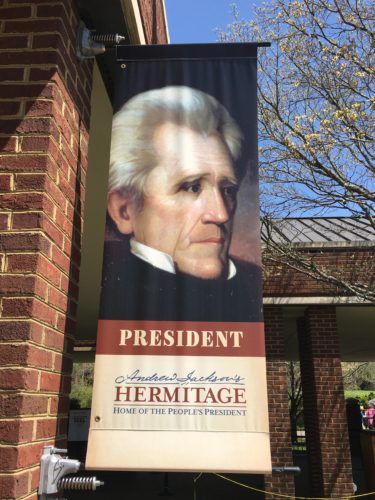

He was born in 1767, fought in the Revolutionary War at age 13, became orphaned by age 14, and married the love of his life in 1794 a decision that would prove to haunt them for many years. Rachel had been married, thought her husband divorced her when in fact it was not, technically making her a bigamist. I’ll let the Hermitage website explain:
Rachel married Lewis Robards at the age of eighteen. By all accounts, it was a most unhappy marriage. By this time, Rachel’s father had died and her mother had returned to Nashville. After separating several times from her husband, Rachel eventually moved to her mother’s house in Tennessee.
A young lawyer, named Andrew Jackson, recently arrived from North Carolina, was boarding with her mother when Rachel arrived. The attraction between the two was immediate. Believing her first husband had divorced her, Rachel went to visit friends near Natchez, and Jackson accompanied her on the journey. While in Natchez they married. Because Rachel’s marriage to Robards had not been legally dissolved yet, theirs was technically invalid.
An Unusual Start Becomes Political Ammunition
When the couple returned to Nashville in 1791, they learned that Robards had initiated the divorce proceedings, yet the divorce was not finalized.
Though no written record of the Natchez wedding has ever been found, Robards used this “marriage” as new evidence in completing the divorce by charging Rachel with bigamy. Andrew and Rachel legally married in Nashville in 1794.
All of this confusion was caused by the fact that divorce was a little understood process then. It was made even more complicated by the distances involved and the changing governmental authorities. (For example, during the process of Rachel and Robards divorce Kentucky became a state instead of a territory of Virginia and North Carolina turned over management of the territory including Tennessee to the Federal Government). Thus, the unusual circumstances of the Jackson marriage were not greatly discussed in Nashville society.
However, during the mudslinging in the presidential campaign of 1828, Rachel’s virtue became a subject of great discussion and political spin by the supporters of Jackson’s opponent, John Quincy Adams.
“I would rather be a doorkeeper in the house of God than live in that palace in Washington.” RACHEL JACKSON
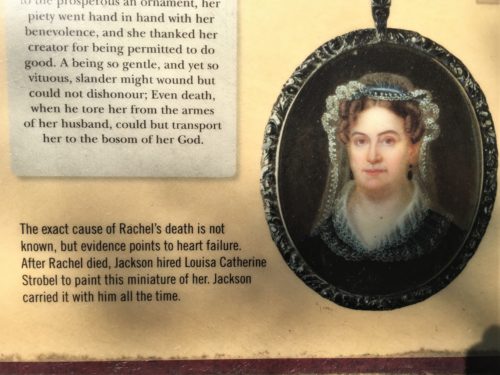
He went on to win the battle of New Orleans in 1815, and run for President in 1824 (which he lost to John Quincy Adams), ran again in 1828 and won, lost Rachel two months before he was to assume office, won re-election in 1832 and retired to The Hermitage where he died in 1845 from tuberculosis. When he died, he still retained a bullet lodged close to his heart as the result of a duel in 1806.
There is so much interesting information on General Jackson (as he preferred to be called, even after he became President), I’ve added a separate “Special Edition” page for anyone wishing to read about him. Most of the information has been taken directly from The Hermitage’s website.
But for now, here’s some of what we saw and learned today. Oh! And at the entrance, they gave us each these hand-held, automated “tour guides”. It’s what you see Blaine holding up to his ear in a couple of pictures – not his phone. 🙂
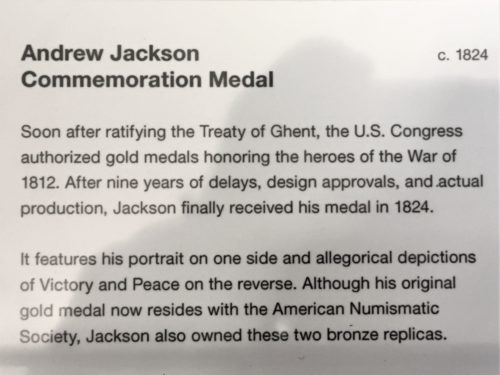
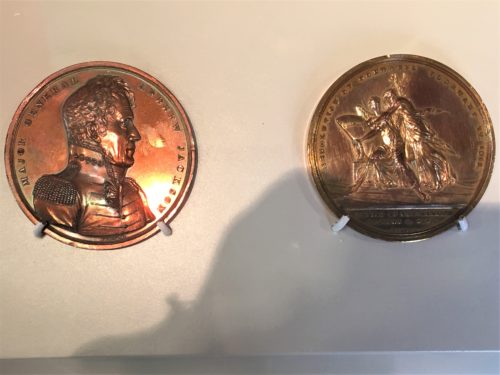
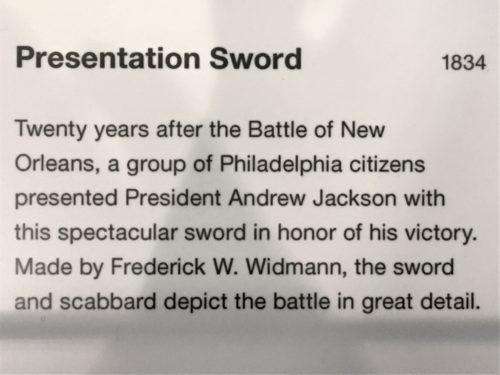
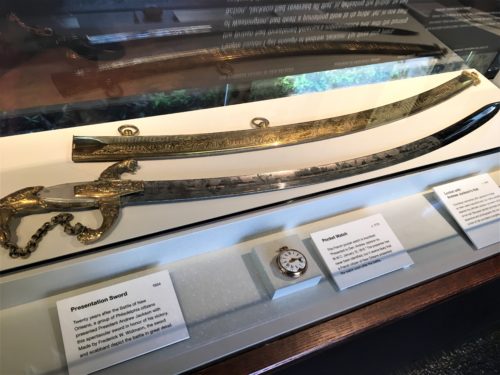
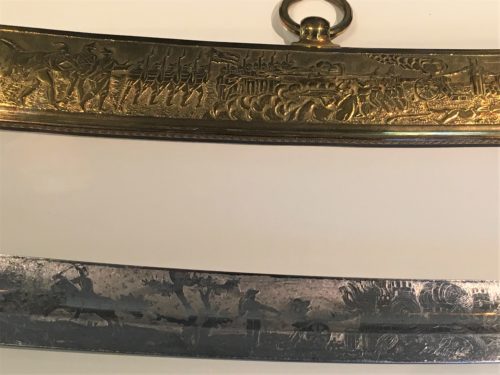
Look at the detail in this!
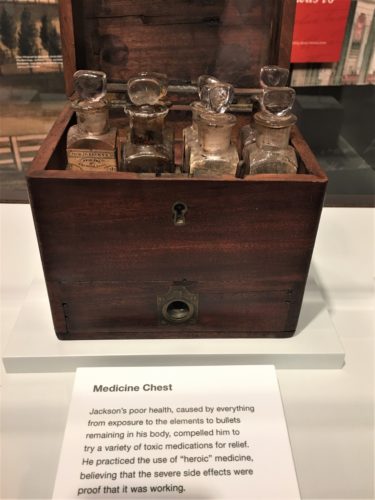
Interesting!
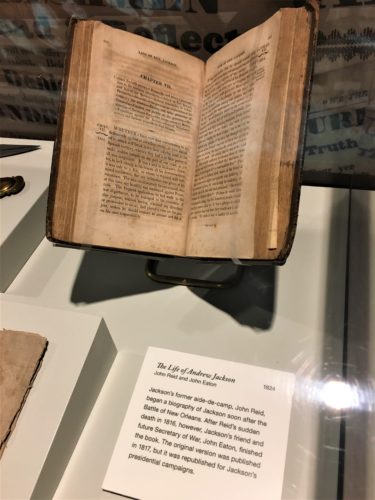
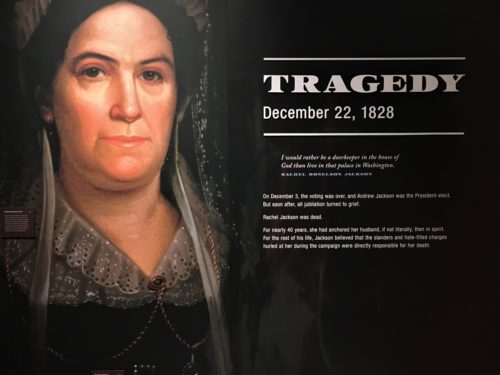
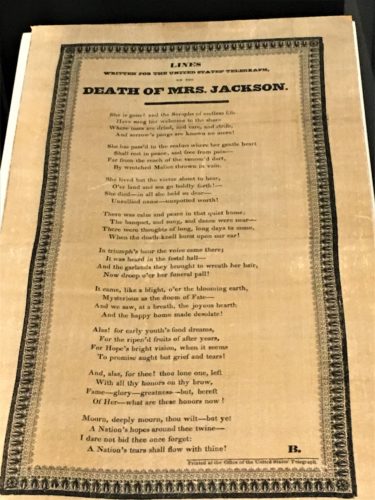

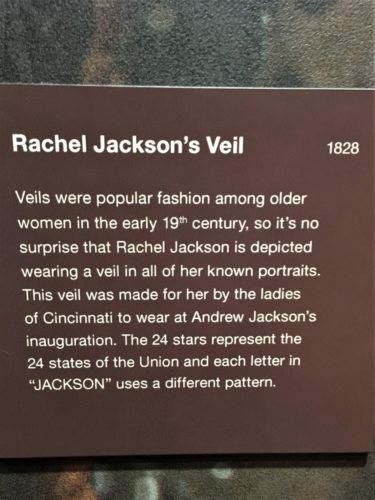
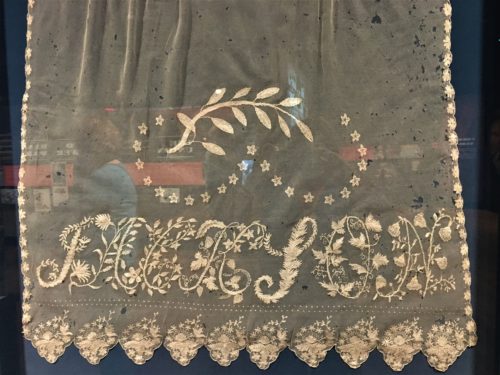
Beautiful work!
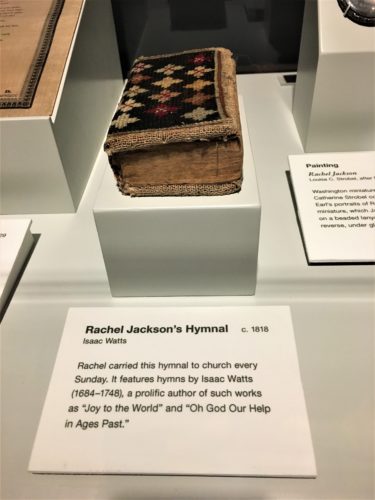
Did everyone take their own hymnal to church back then?
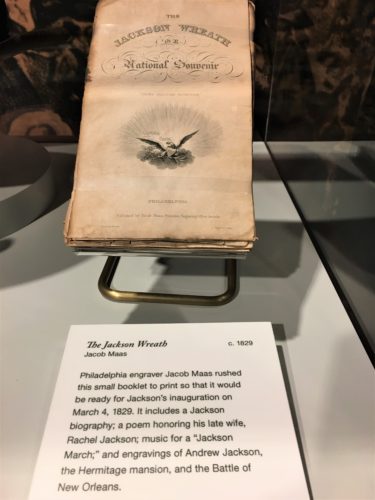
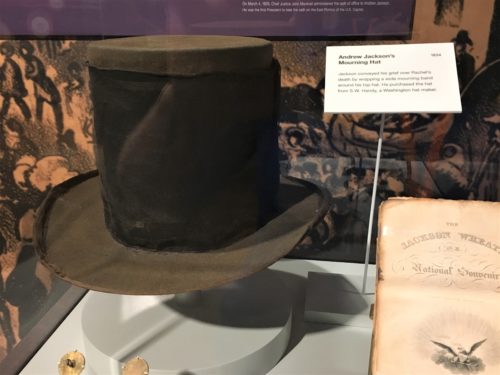
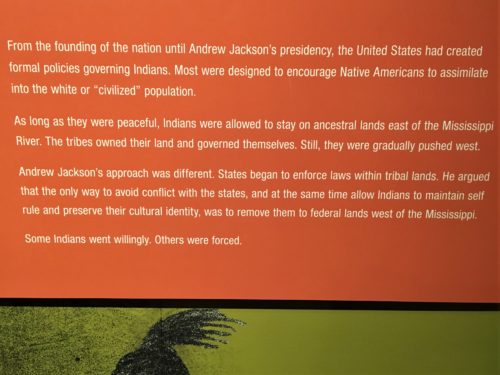
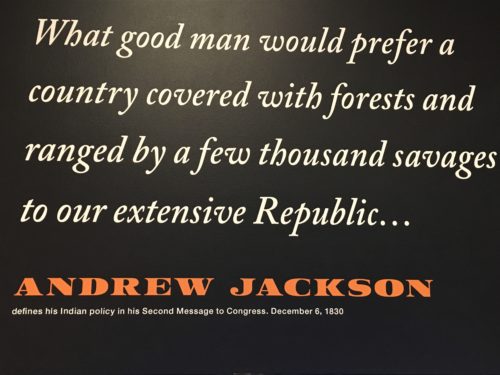
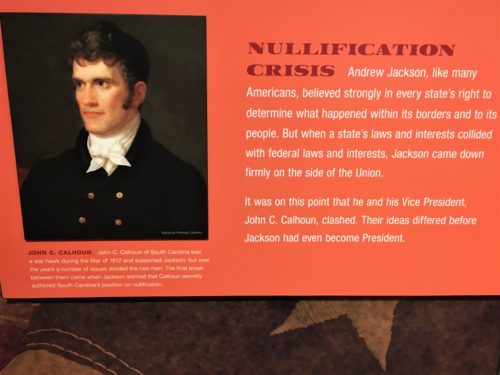

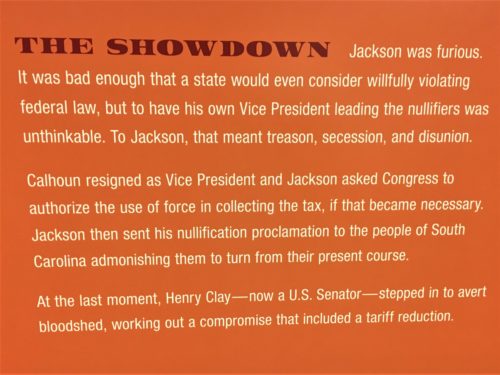

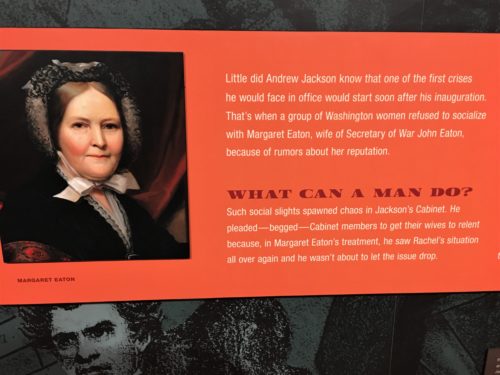
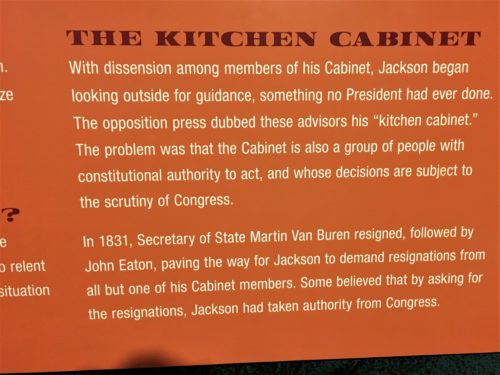
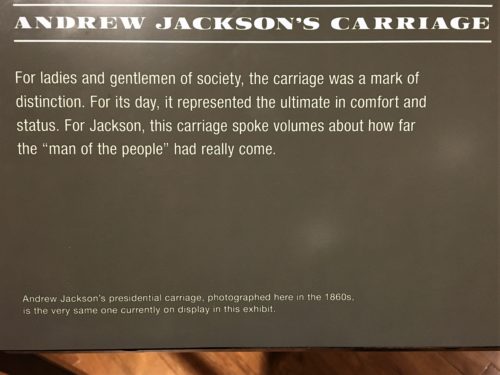
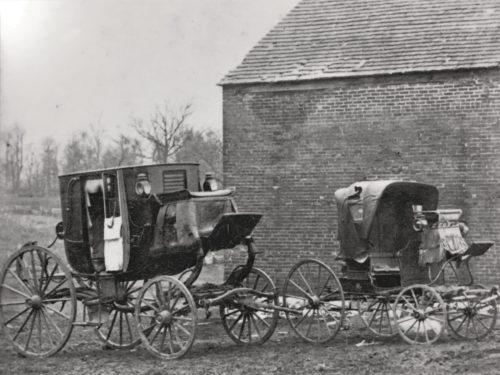
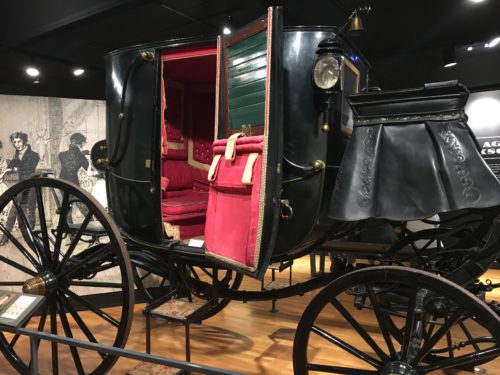
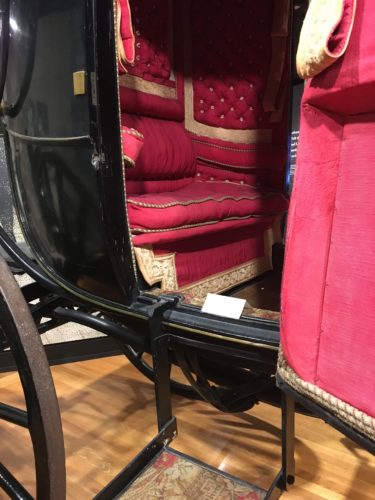

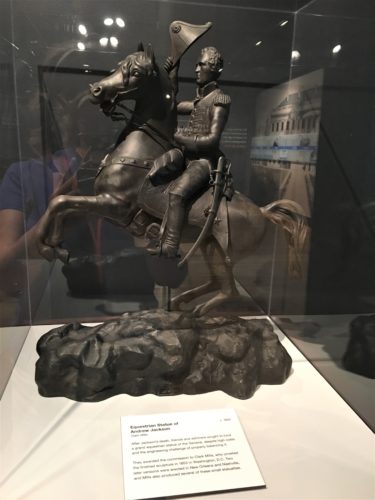
Does this look familiar?
It’s one of only three miniatures still in existence.
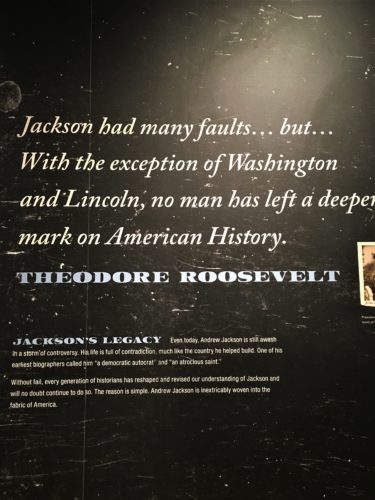


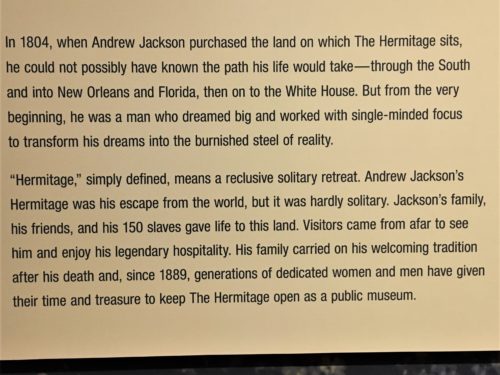
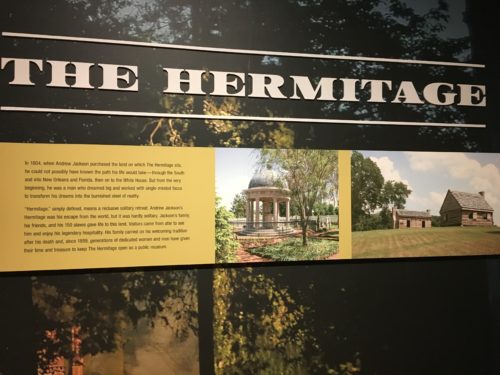
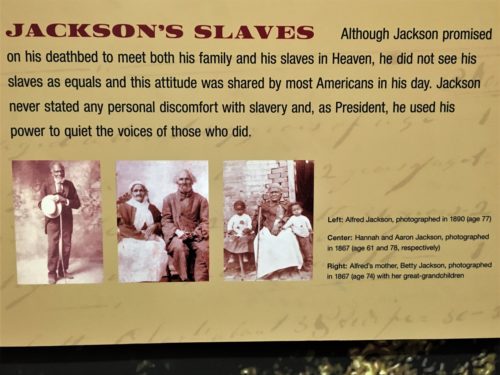
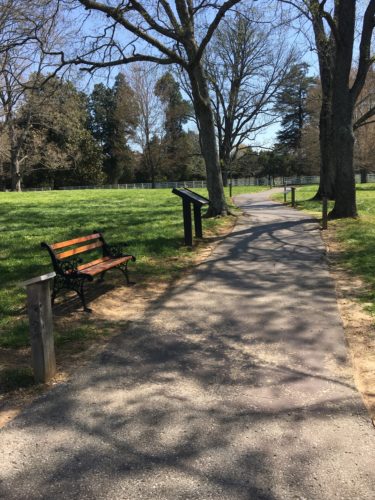
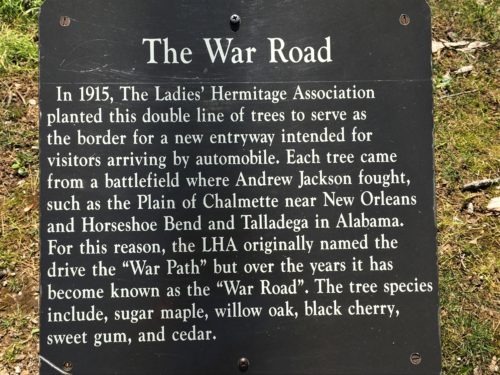
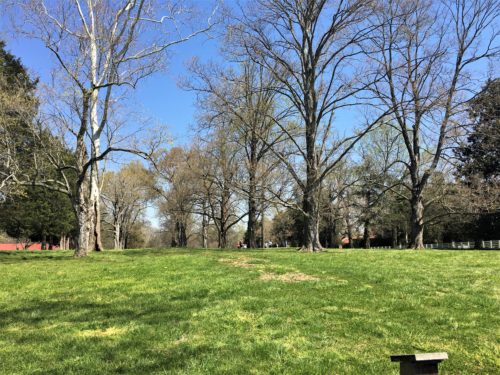
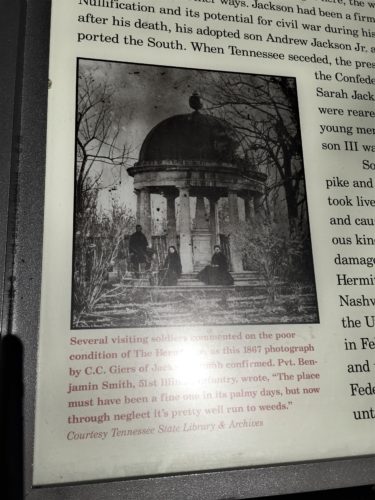
What a shame!
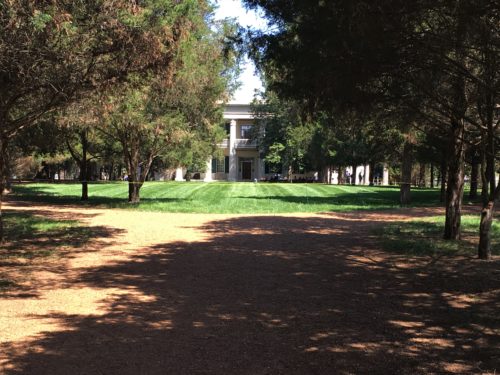
Our first glimpse

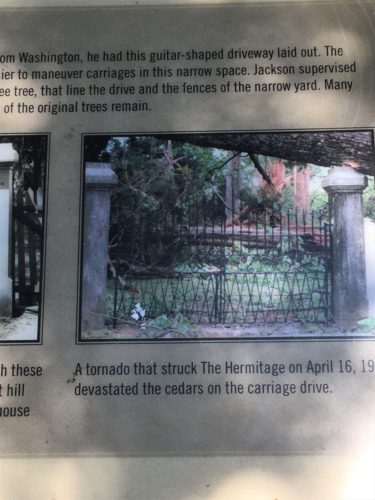
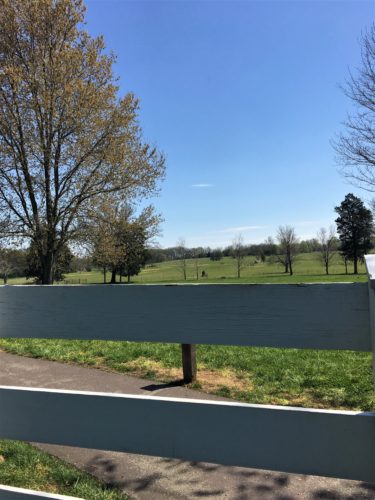
The pastureland was beautiful. There’s over 1,200 acres here.
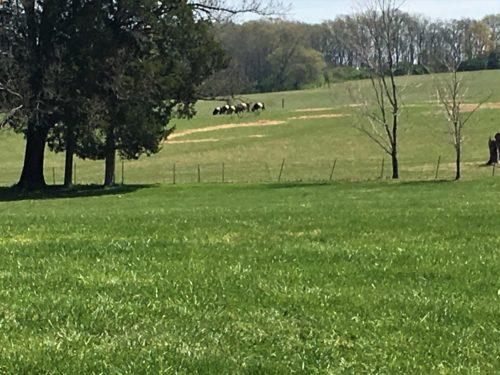
Oreo cows!
We were disappointed to learn that there could be no picture-taking inside the house. It was lovely! With most of it, including the wallpaper, being original. Blaine heard on the mobile tour guide that The Hermitage is the best preserved Presidential home because of almost everything being original.
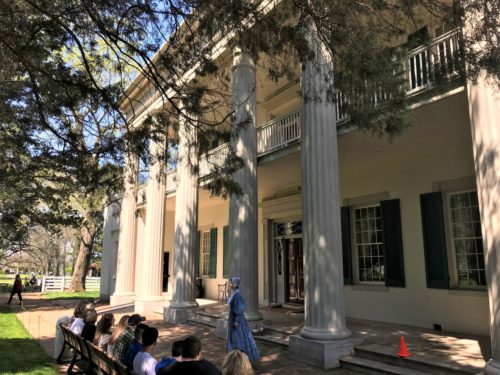
They only took a few people at a time into the house – a group about every 5 minutes.
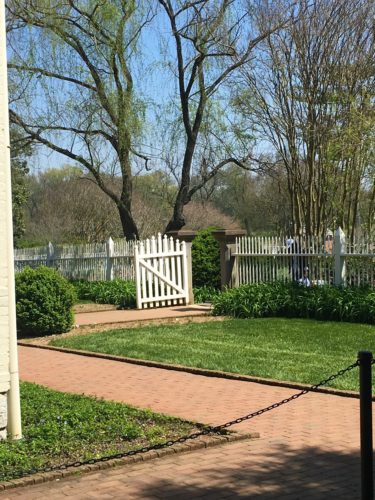
We waited in line near the garden area.
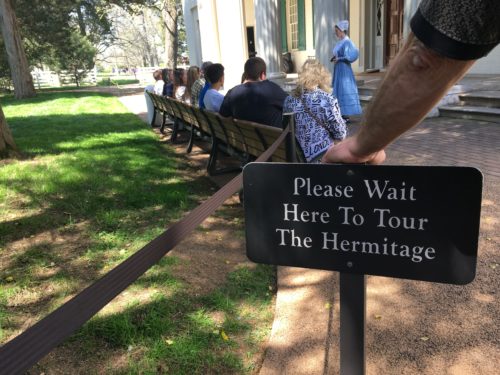
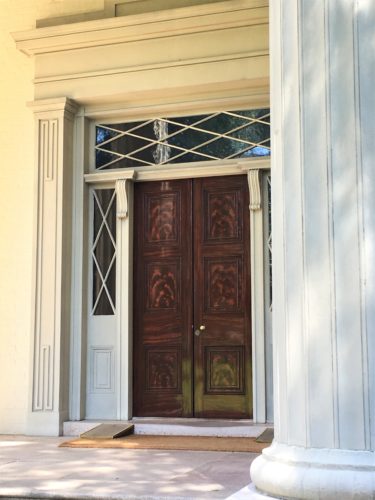
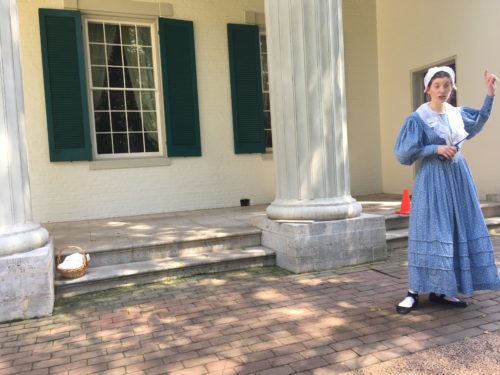
She shared a bit about the history of the house before we went in – and also admonished us not to take pictures.
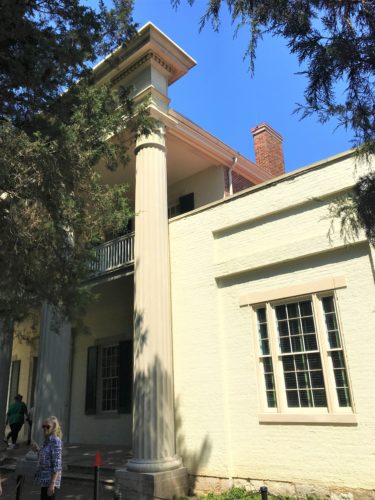
See the red brick?
That’s because Jackson was a thrifty man and said no one would ever see the outside except for the front. He only allowed painting the front, because”paint costs too much.”
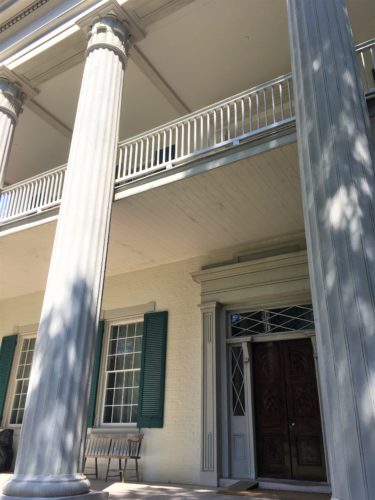
We were also told that the columns were originally supposed be marble, but that was also too expensive. They’re wood and painted with a special paint with sand in it to make them look more like stone.
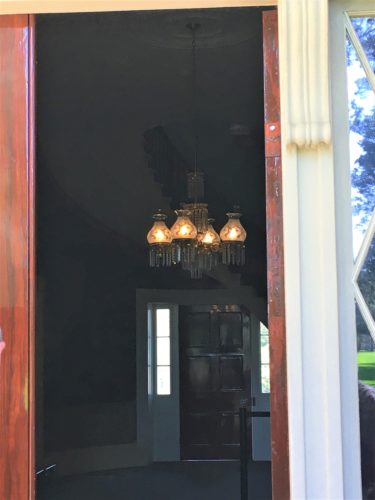
This is the only picture that shows the inside – just before we entered.
The tour continued outside for us.
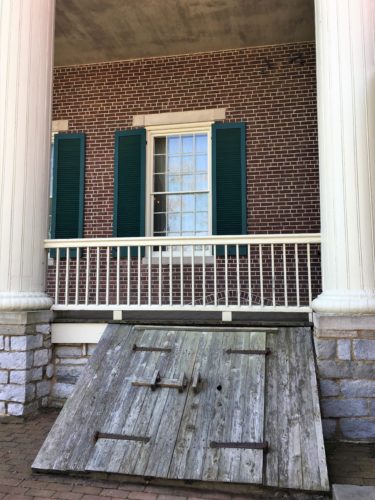
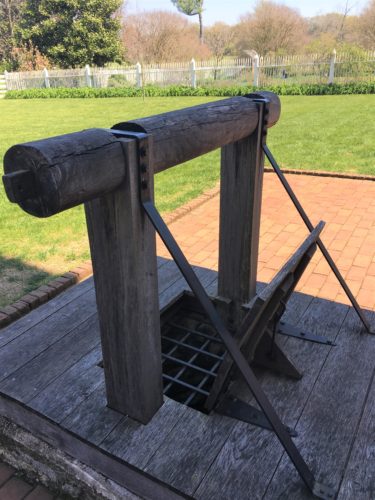
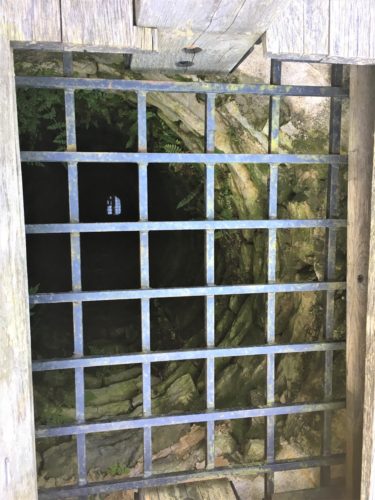
There’s water in the well!
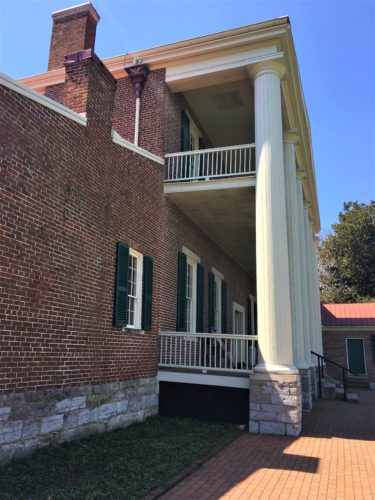
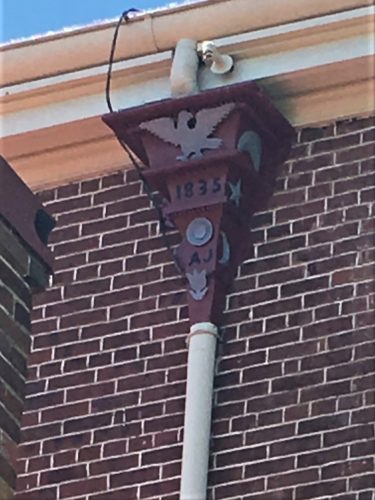
I spotted this downspout.

Beautiful flowers!

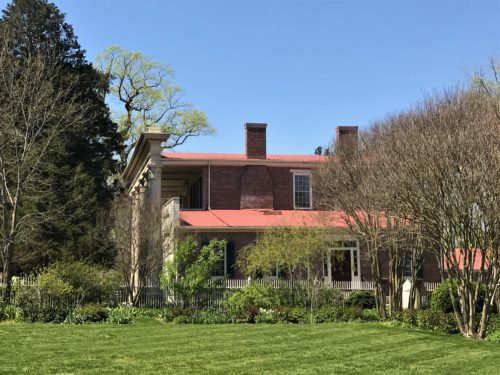
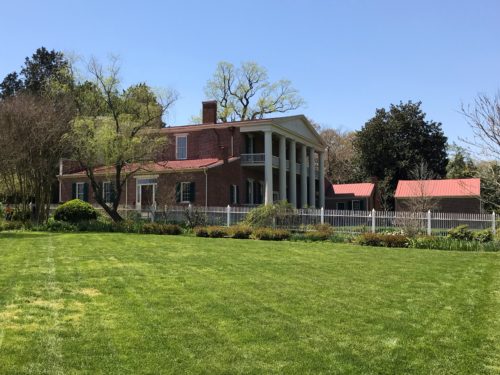
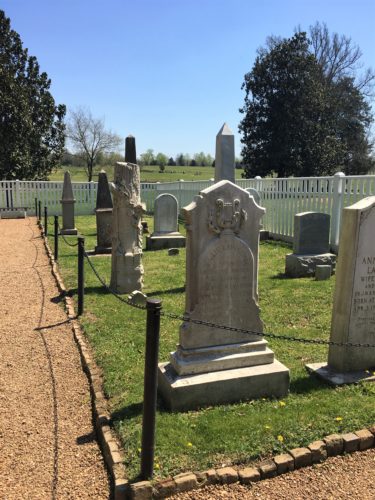
We had no information on the guests of this cemetery. The ones we could read looked like family members.
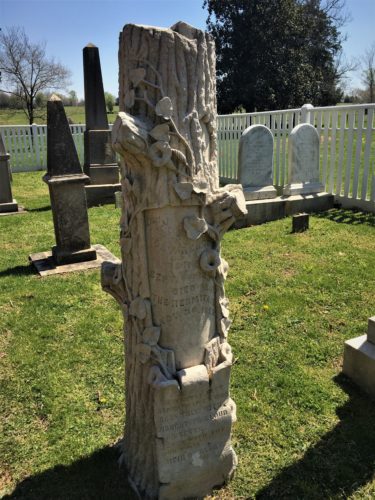
Isn’t this interesting?
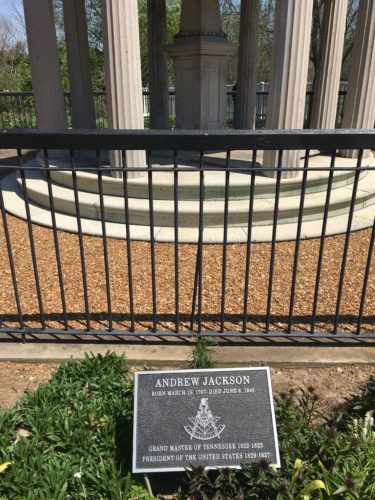

Jackson had this built for Rachel’s tomb, with room for him to be added alongside her.
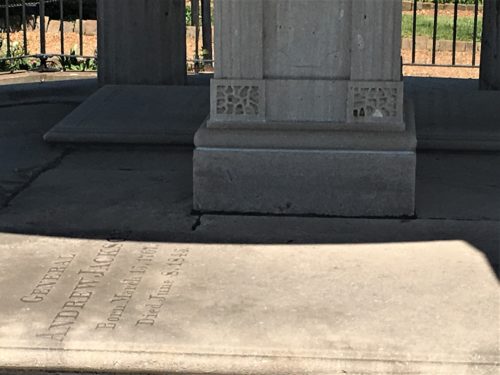
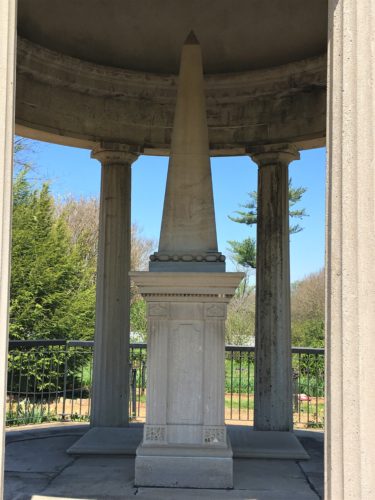
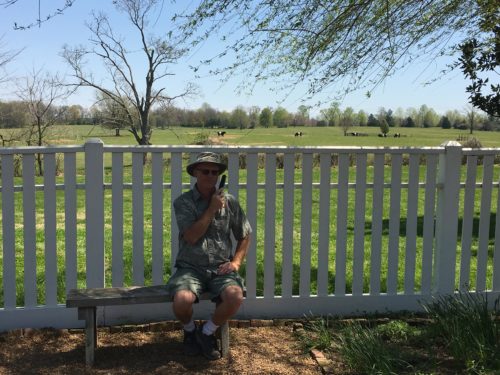
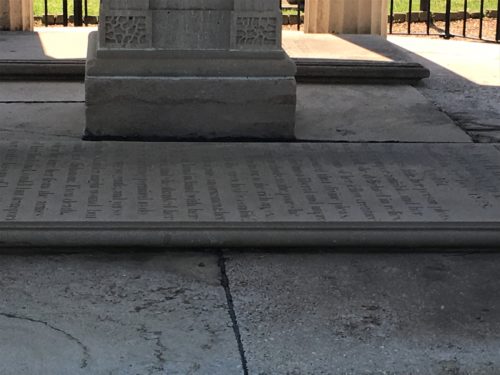
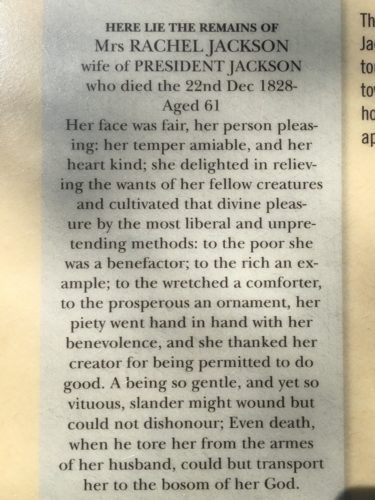
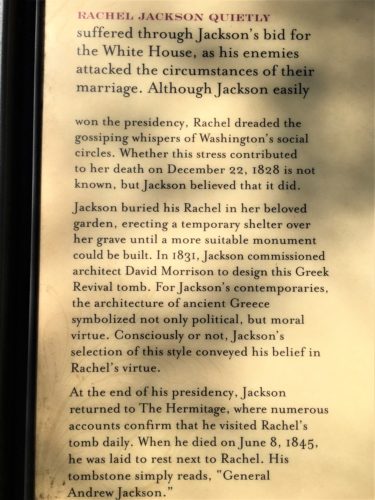
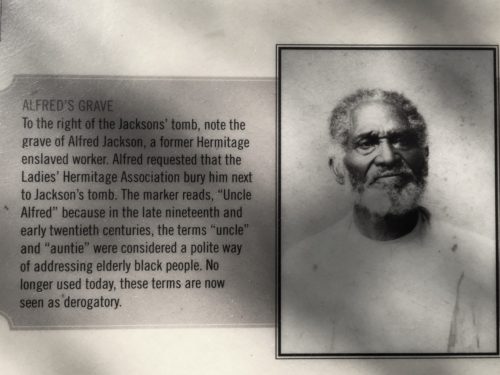
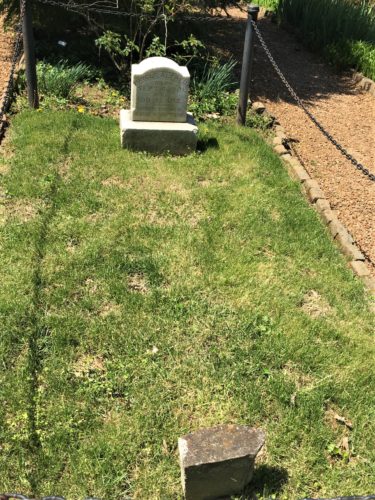
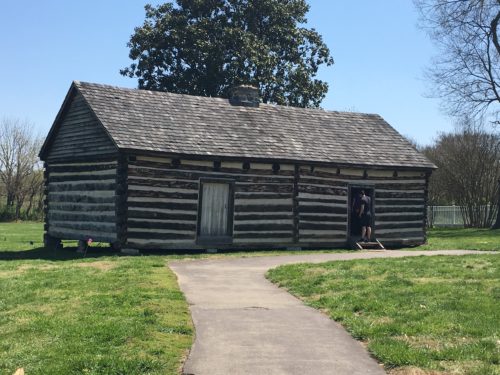
Alfred’s home.
Here’s something interesting about him. . .
He was the Hermitage’s first tour guide!
And he used his position to earn extra money to sell souvenirs.

The inside of Alfred’s home.
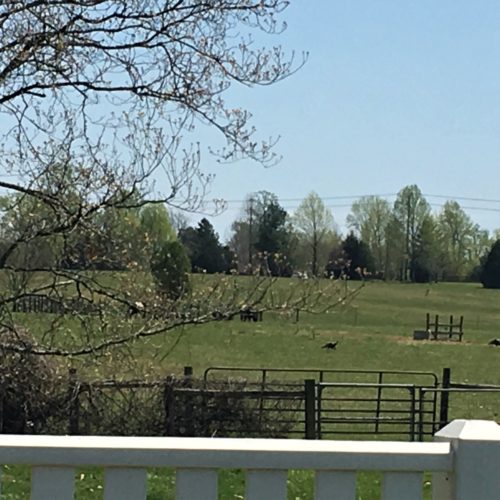
Turkeys!

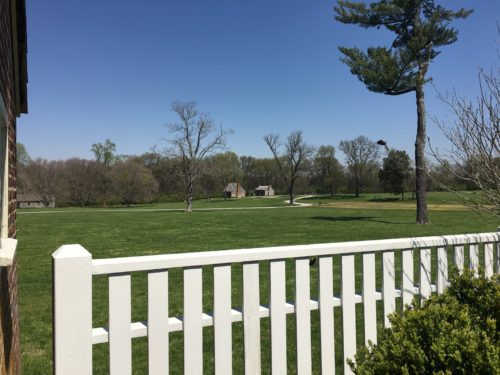
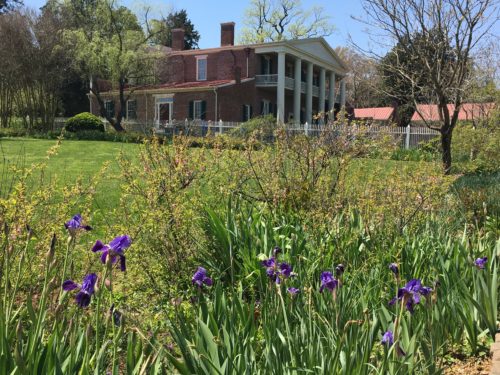

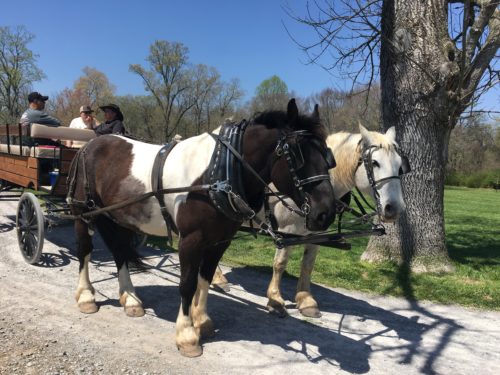
They have these horse-drawn buggy tours if you want to pay extra.
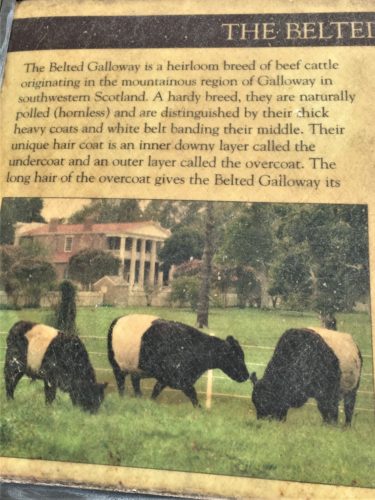
There’s even information on the special cows here!
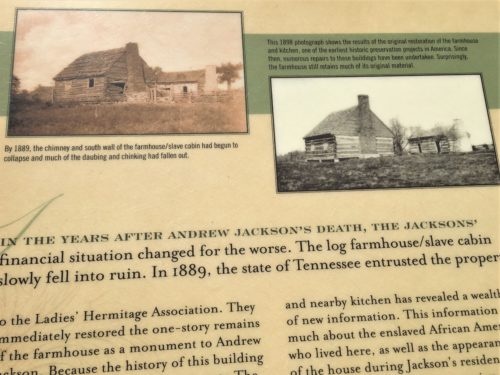
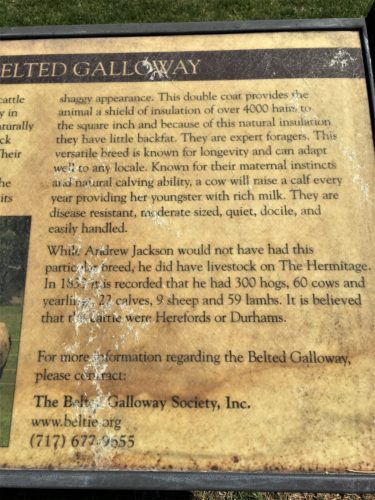
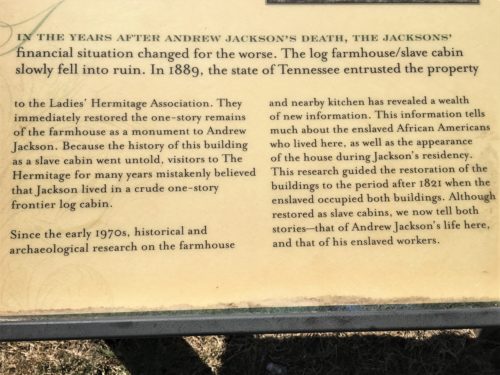
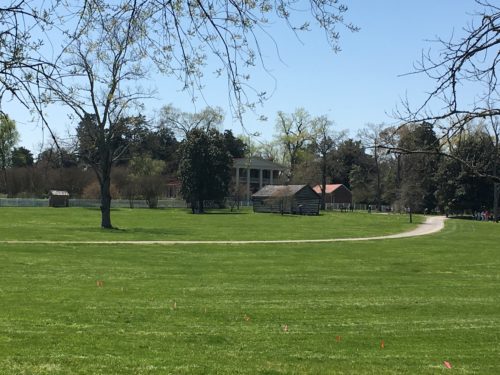
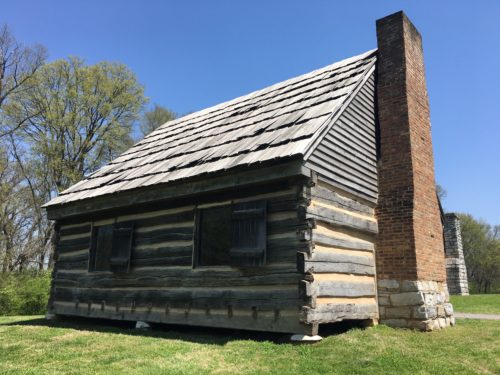
The original (reconstructed/renovated) home of the Jacksons.
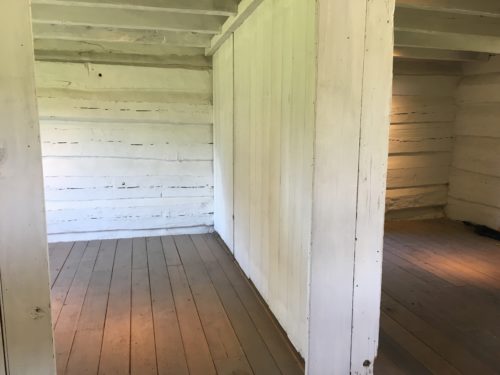

We’ve moved on to the original home of Andrew and Rachel. They lived here while the main house was being built.
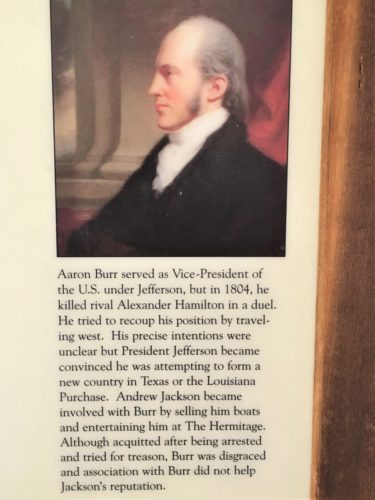
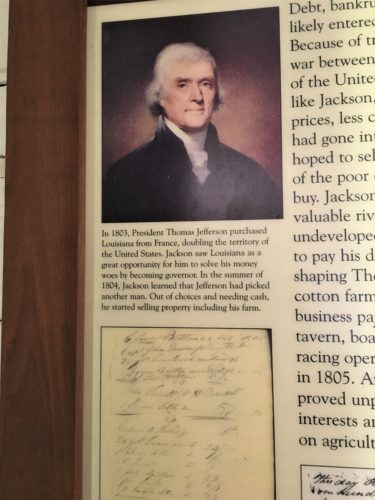

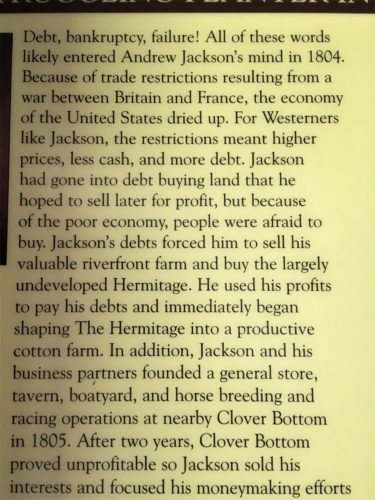

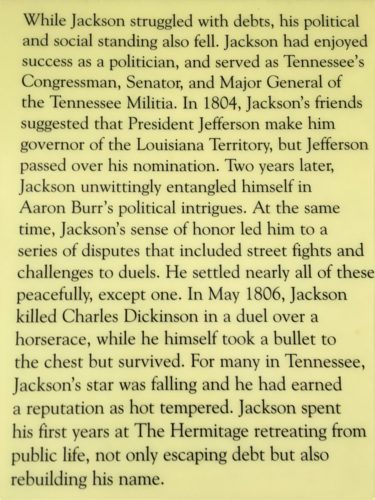
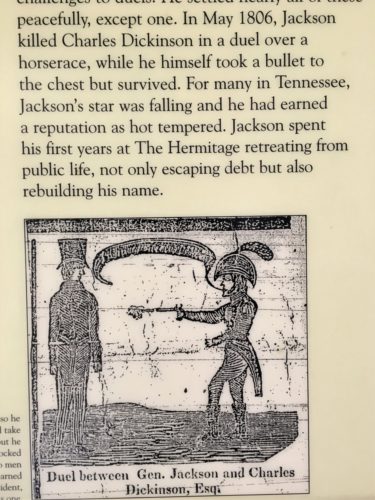
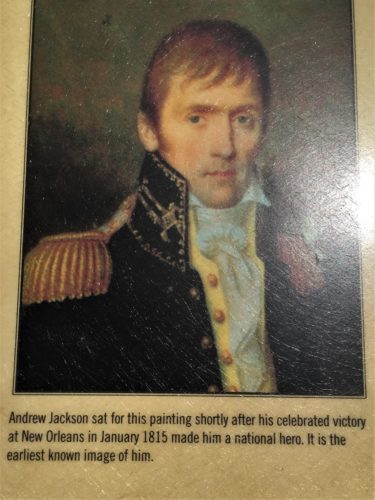
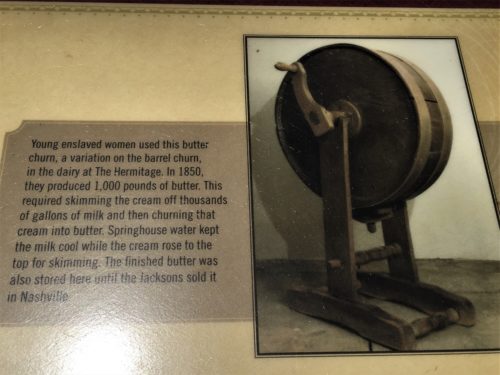
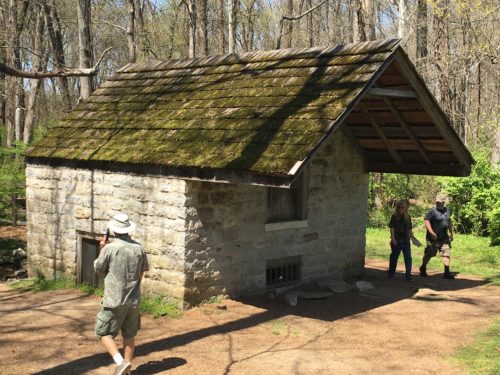
The spring house – with an actual spring running under it!
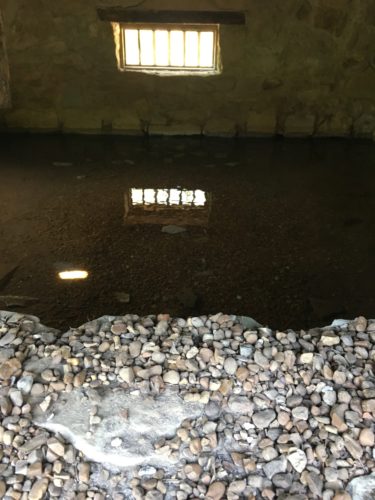
As we were prepared to leave, we had the opportunity to learn about duels since Andrew Jackson was involved in three – one being fatal. Blaine and I had the opportunity to participate as “Seconds”. I was eager, Blaine was a bit more reluctant, only giving in when no one else volunteered. 😊
We learned that duels seldom ended in violence. They were only for the elite of society. If anyone else practiced this, they’d be arrested, charged and punished – most likely a death penalty. The reason? Most of those participating in duels were the judges, jurists, mayors, high-ranking men of society . . . or their sons. Duels were suggested as a matter of honor. Honor was important back then. If you lost your honor, you lost your standing in society.
They usually started by some kind of insult that the insulted party was forced to defend. The person calling out against the insult met face-to-face with the one doing the insulting. The insulted asked for “satisfaction”. It was then time for the “Seconds” (each person had an intermediary to arrange terms of resolving the issue) to step in and it often took days or sometimes weeks of negotiating. If an agreement couldn’t be made, then and only then, was a duel is scheduled. Very few actually led to pistols.
Out of the three Jackson was involved in, only one led to pistols. If you read the “Special Edition”, you’ll learn more details, but essentially, the two men were arguing over a horse race in 1806. Jackson knew his opponent was a better marksman and the rules of the duel allowed his opponent to shoot first. This is the bullet Jackson carried with him the rest of his life. Since Jackson was still standing after he was shot, he was then permitted to take aim and fire. His opponent, Charles Dickinson died.
Nowadays, this is considered first-degree murder. Especially since they took days or weeks to plan. Unbelievable!
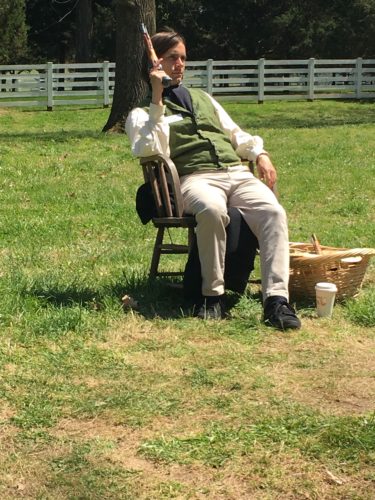
Waiting for time to start.
He was the insulted party (by a volunteer from the audience). Word was out that he’d been called a locofoco.
Which was a faction of the United States Democratic Party that existed from 1835 until the mid-1840s.
Not sure that’s worth possibly dying over.
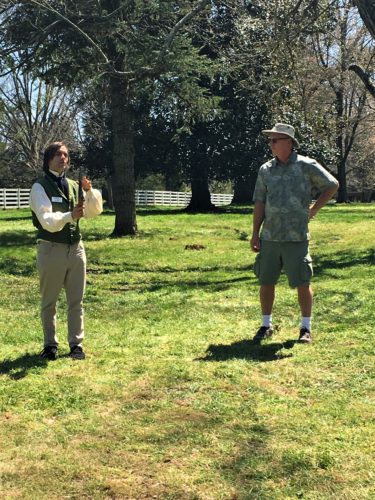
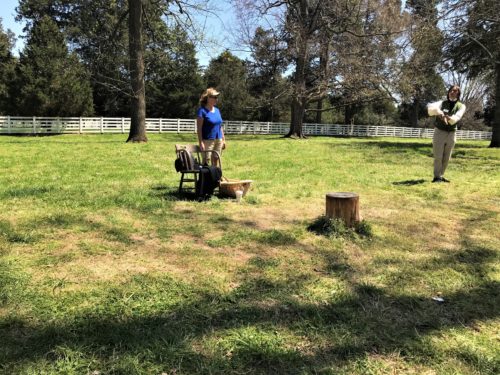
As the Second who won the coin toss, I get to call, “FIRE!”

After reading and learning so much about this great man (who by the way actually knew all 6 Presidents before him), there is much that I find to compare him with our current President. See what you think. Check out the Andrew Jackson “Special Edition”.
We could have spent more time. We had no idea what all was here.
Lunch break!!
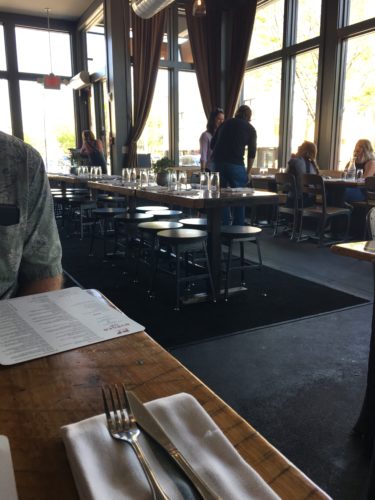
This is Burger Up!
Recommended by a friend’s daughter who used to live in Nashville.

They use local resources for their ingredients.
They even make their own ketchup! Which was excellent by the way.

Time to head to Greece! 😊
In Centennial Park (21 acres total) in Nashville, there stands an exact replica of the Parthenon in Greece, including a relatively recently added statue of Athena, goddess of wisdom, courage, inspiration, civilization, law and justice, strategic warfare, mathematics, strength, strategy, the arts, crafts, and skill. Whew! She sure had a lot of responsibilities!
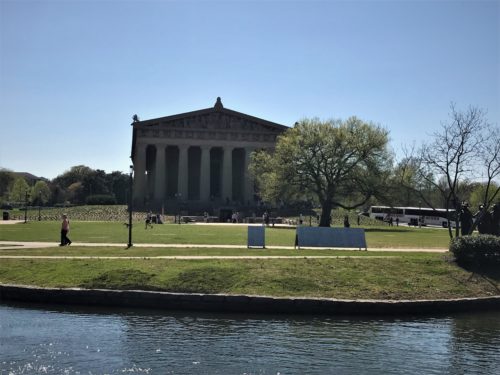
This monument was originally built in 1897, without the statue, for a Centennial celebration – sort of like a World’s Fair. It housed art exhibits. It was only supposed to last about 6 months. Then in the 1920’s as it was beginning to crumble, the city decided to make it more permanent and it was built as it currently is (still without the statue, though). It was re-opened to the public in 1931.
The statue was commissioned in 1982, unveiled in 1990 and gilded in 2002 with eight pounds of 23.75 carat gold! The cost for reconstruction (excluding the statue) from 1991-2001 was $12M. Based on my brief research of the cost for the gold used in the gilding, I’d say a minimum of $30,000 for the gold alone.
Let me tell you, it’s quite a sight!
It cost us $6/person to go in, but it also includes an art gallery (which we weren’t allowed to take pictures in). Some of the paintings in there dated back to the 1700’s! Most were landscapes and they were all gorgeous! There was also a section dedicated to the building of the statues outside. I think they call them “pediments”. This is what the brochure they gave us says about them:
Between 1801 and 1804, British diplomat Sir Thomas Bruce, 7th Earl of Elgin, removed a group of sculptural fragments from the Acropolis to England; they included pieces from the Erectheon, the Parthenon, and the Propylea. Eventually, they became part of the British Museum’s collection.
At the time of the Nashville Parthenon’s rebuilding, the city purchased a set of casts of the Parthenon pediment fragments from England. Sculptors Leopold and Belle Kinney Scholz used them as they re-created the complete pediments on the Nashville building. The casts remain, as do the Kinney-Scholz maquettes, as part of this Parthenon’s permanent collection.
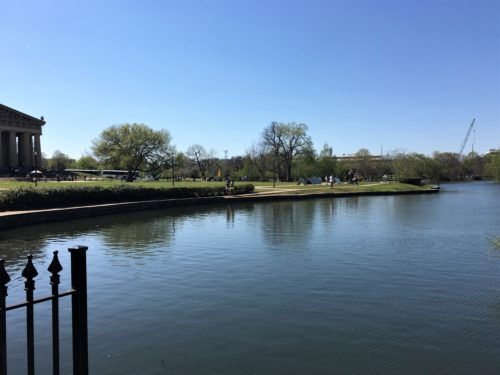
Centennial Park
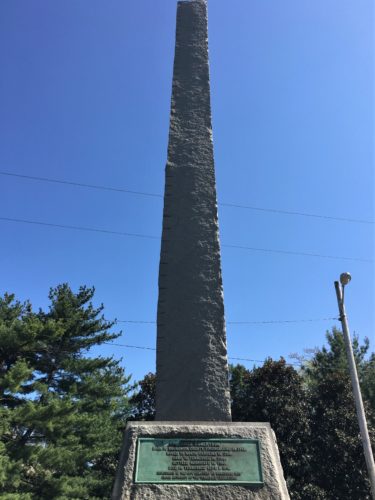
This monolith stands in the park as a memorial to a man named James Robertson
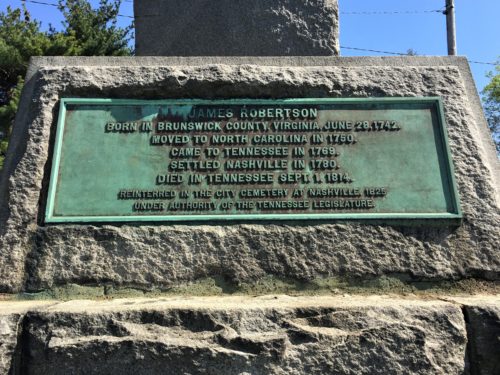
James Robertson was an American explorer, soldier and Indian agent, and one of the founding fathers of the State of Tennessee.
A glimpse of our time in the Parthenon:
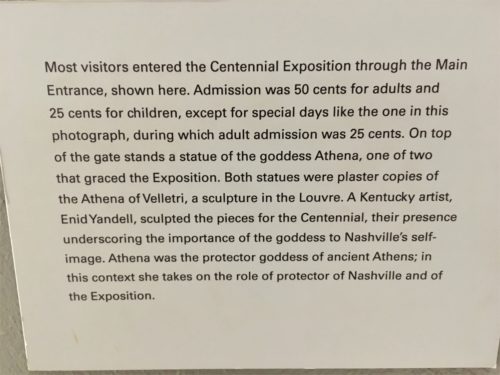
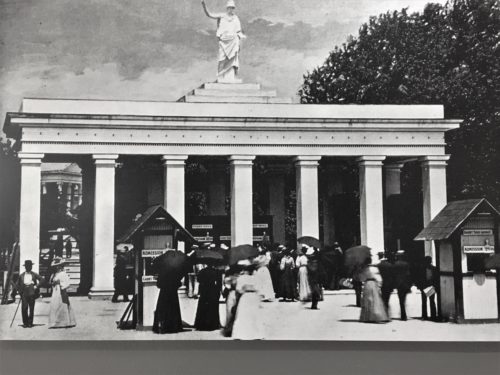
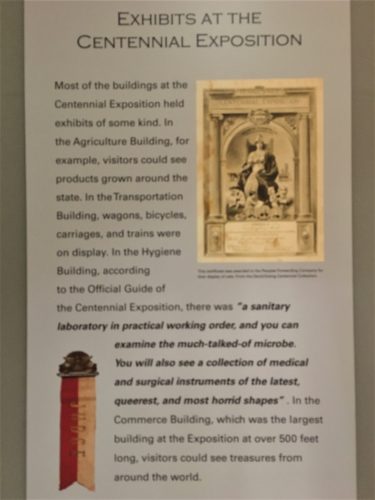
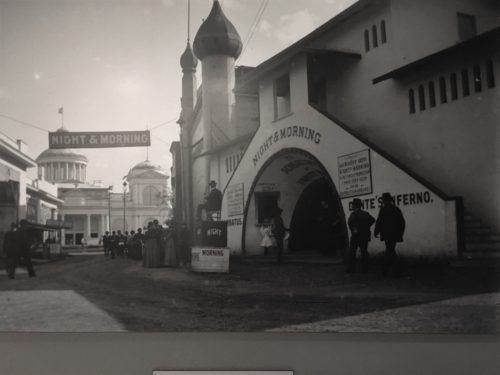
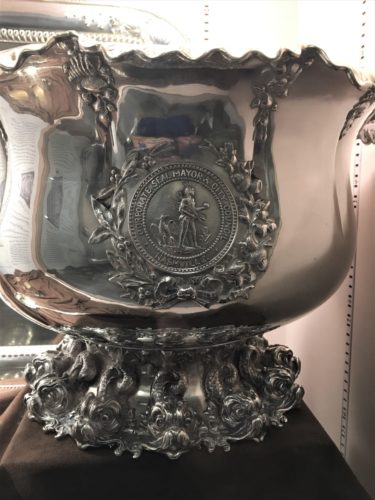
They had lots of commemorative pieces.
This silver bowl was huge and so ornate!
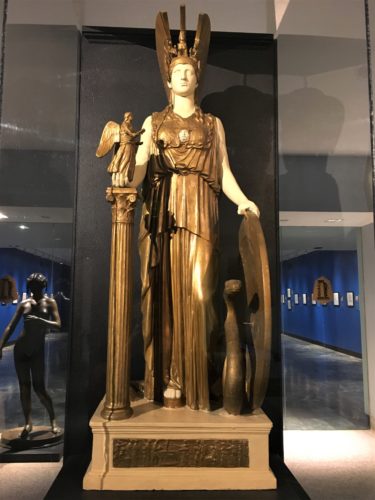
A small replica of the statue we’re about to see.
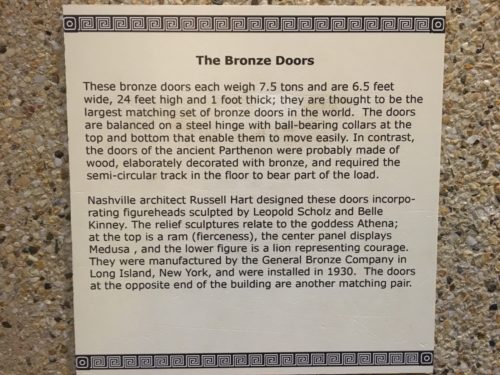
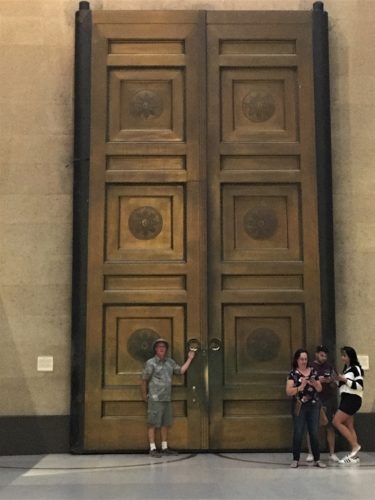
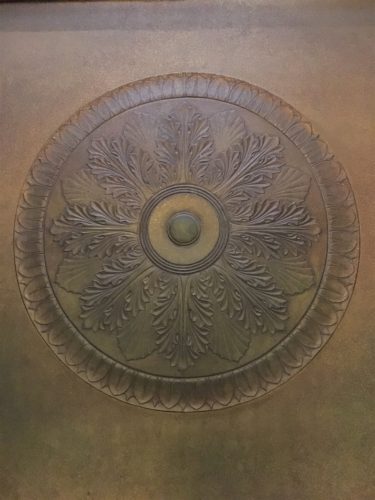
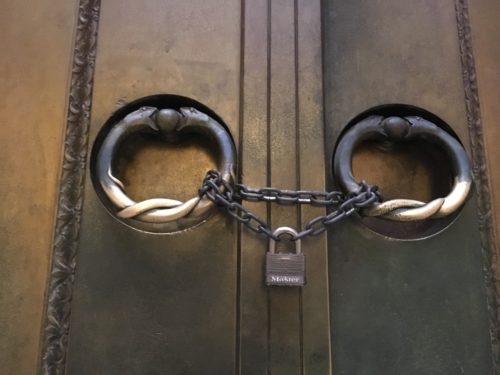

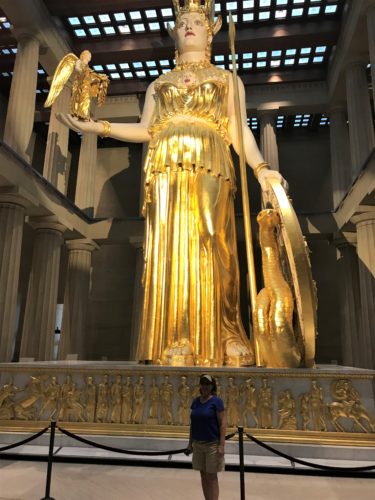
To add perspective
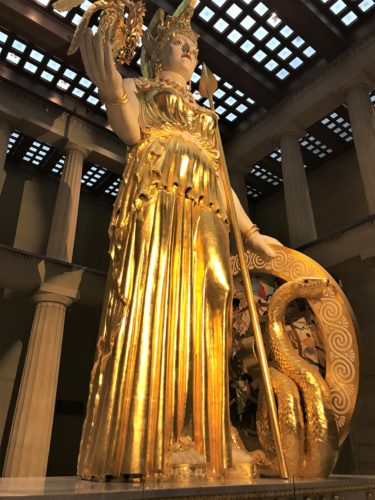
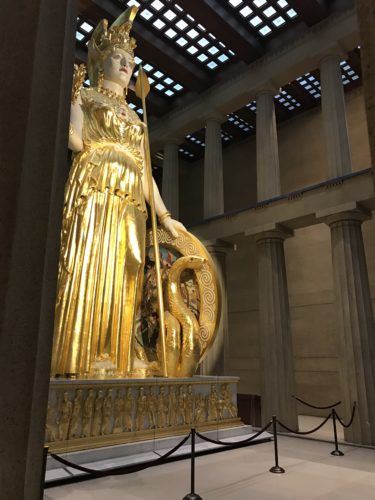
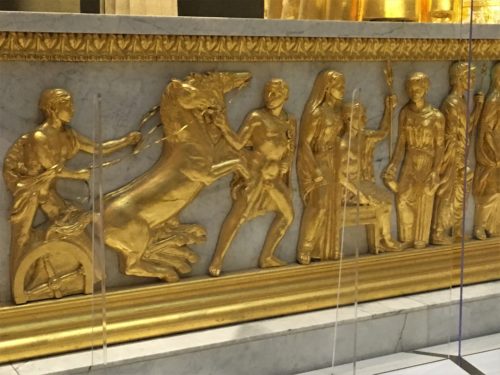
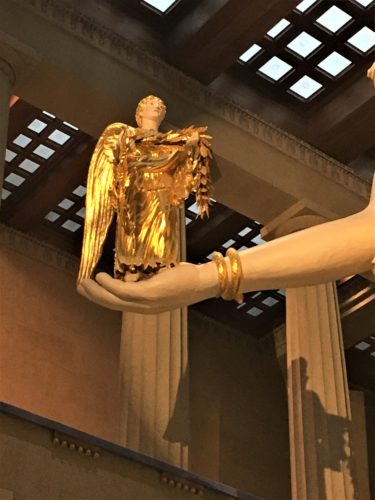
I read that the skin of the original statue in Athens was carved from ivory. Of course that couldn’t be done here, so it’s paint.
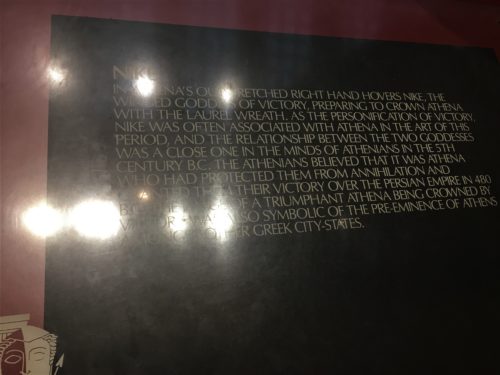
I’m sorry these signs are so hard to read.
It’s the best I could do.
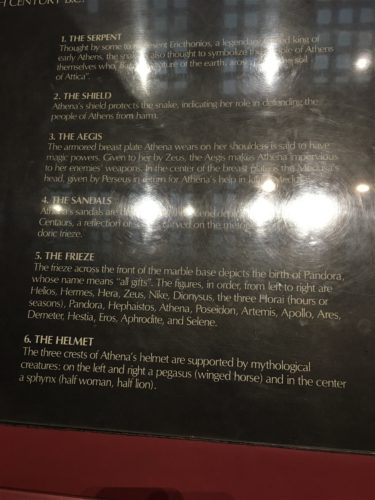
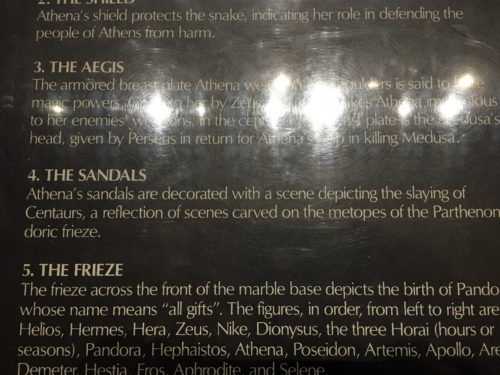
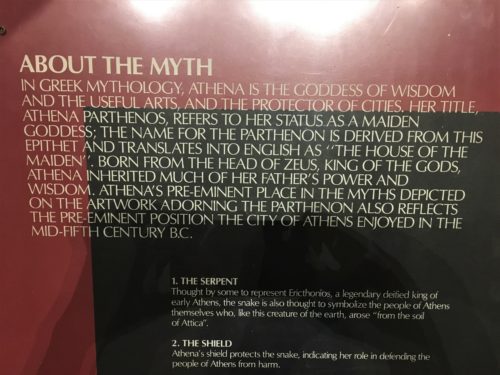
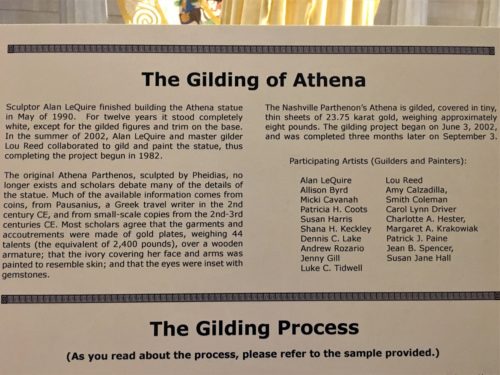
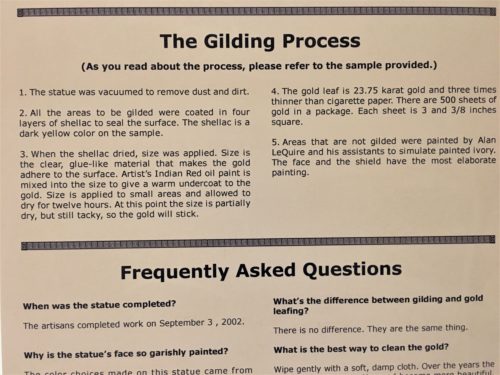

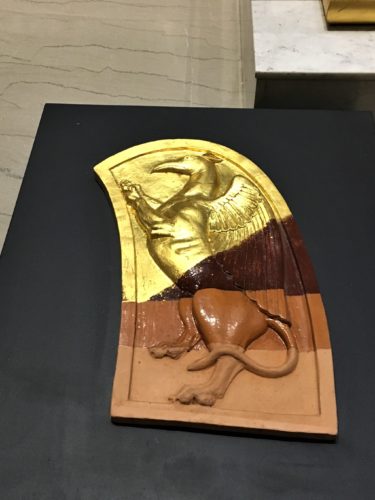
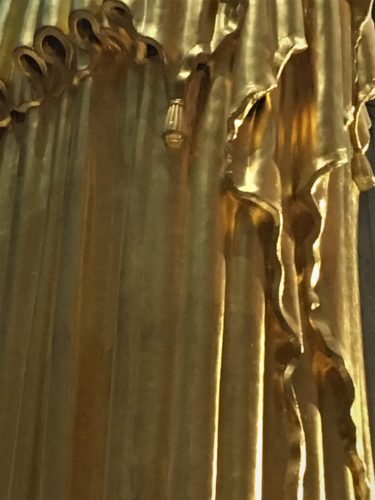
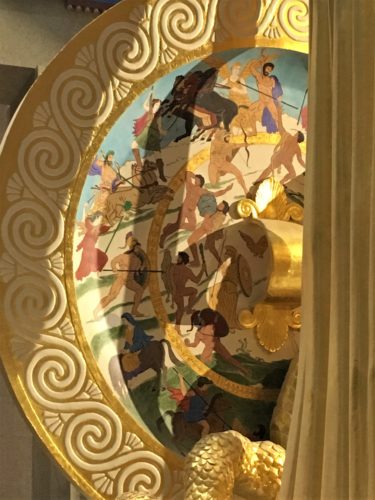
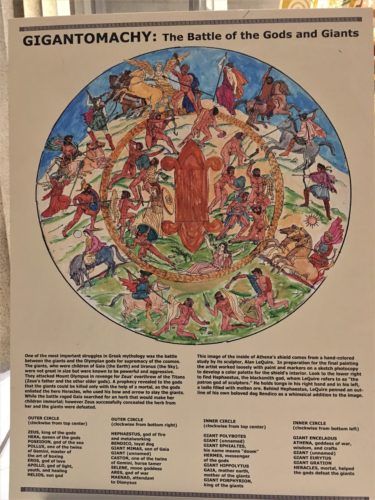

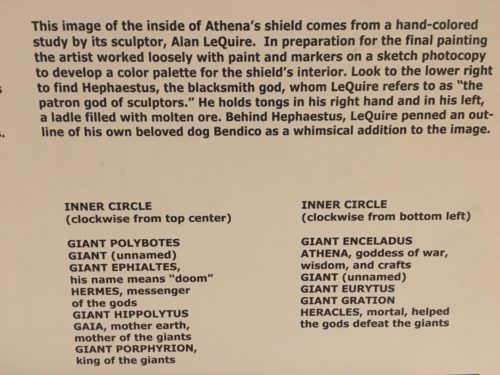
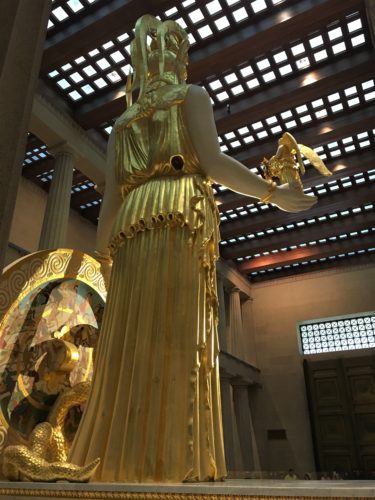
I don’t know why it looks like she has a hole in her top.
I’m sure it’s supposed to be there though.
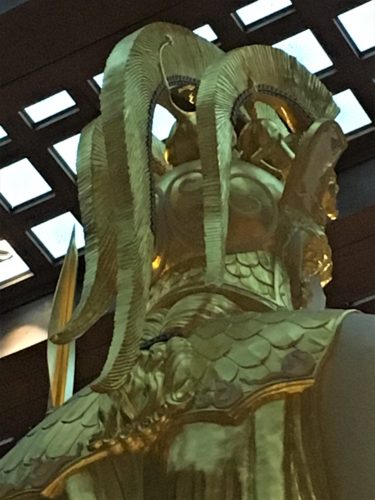
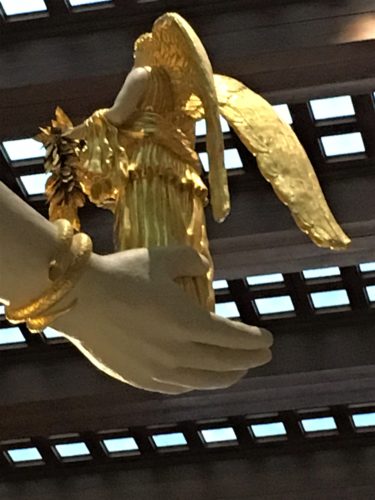
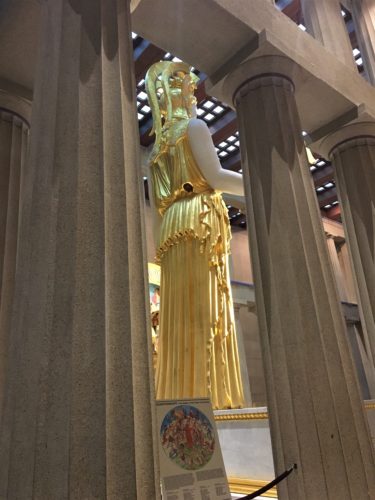
We left the goddess area and entered the back of the temple where they had displays of the pediment renditions.
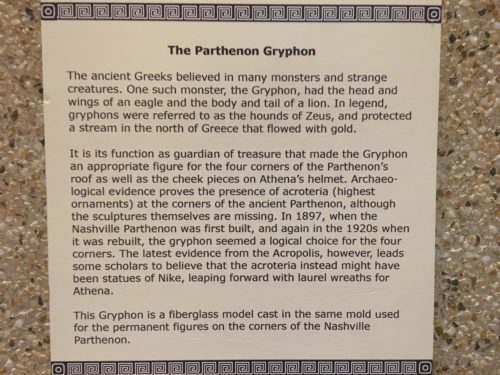
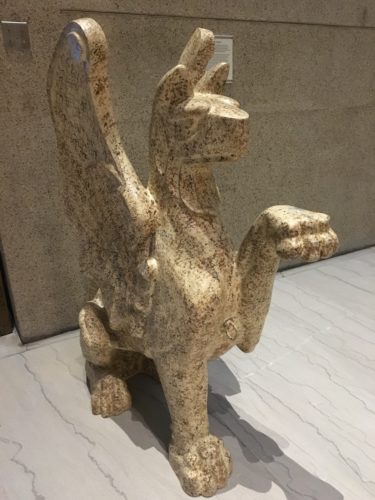
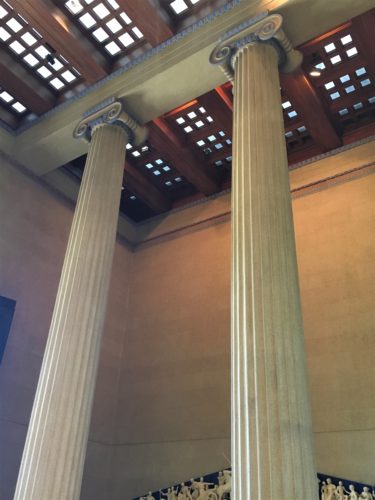
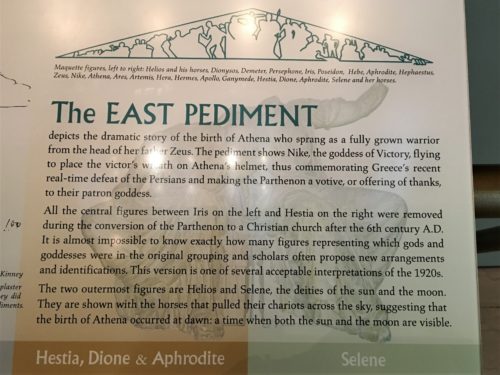
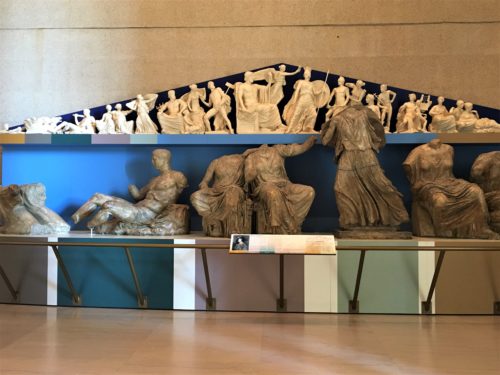
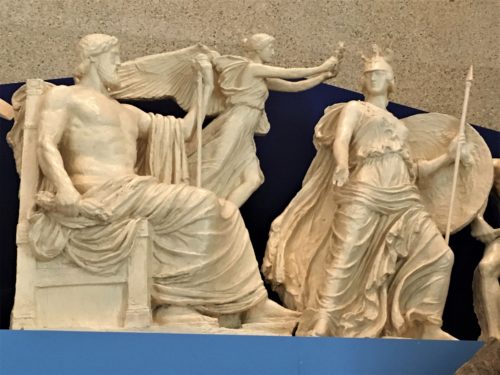
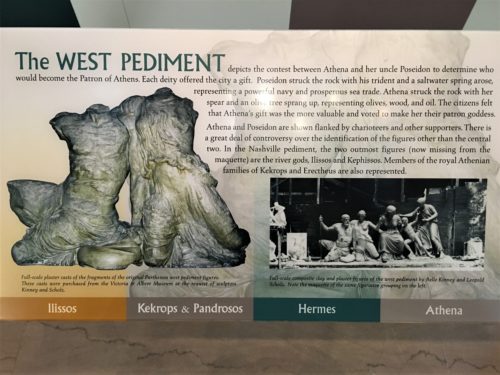

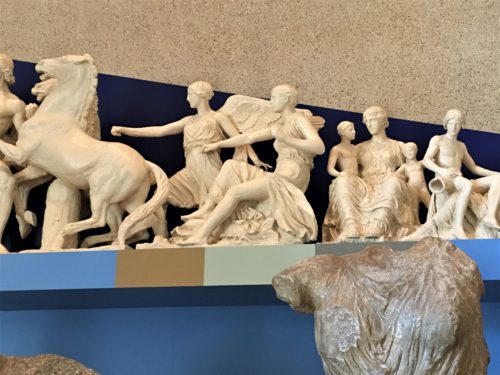
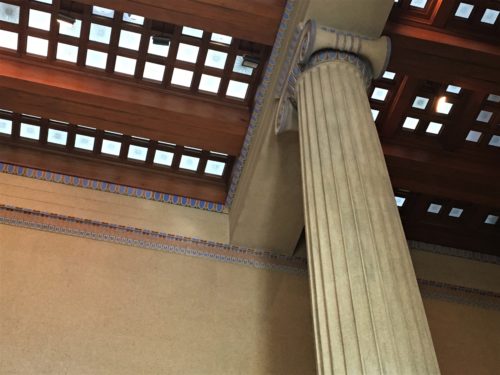
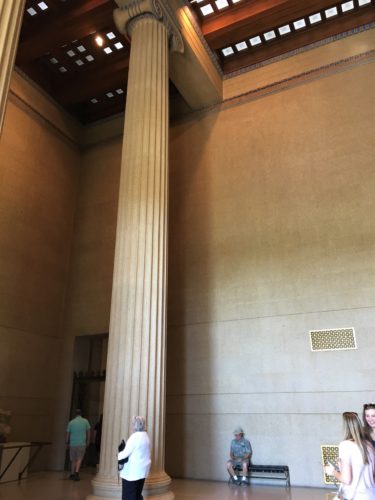
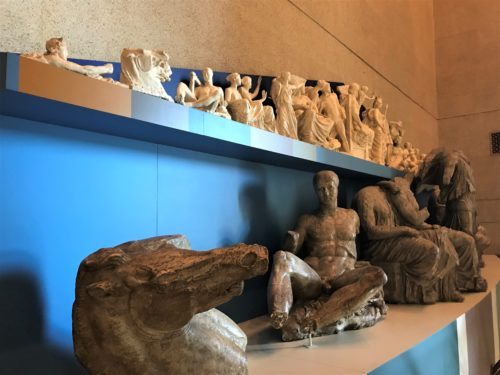

There’s another set of bronze doors here.
It looks as though you can go in and out here, but the glass doors are locked.
Must be an emergency exit.
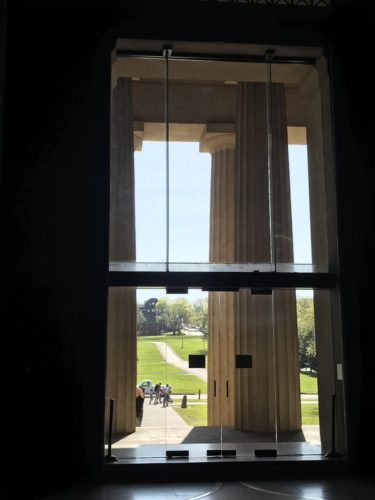
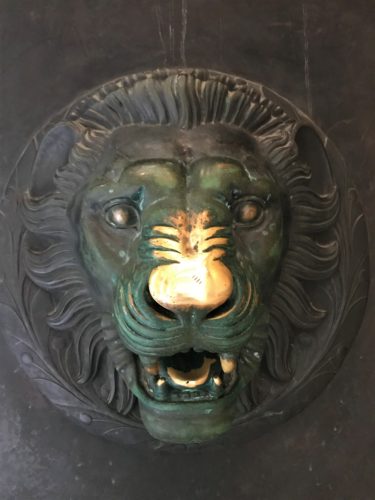
Lots of people have touched this lion! : )
We exited the back to view the other side of Athena.

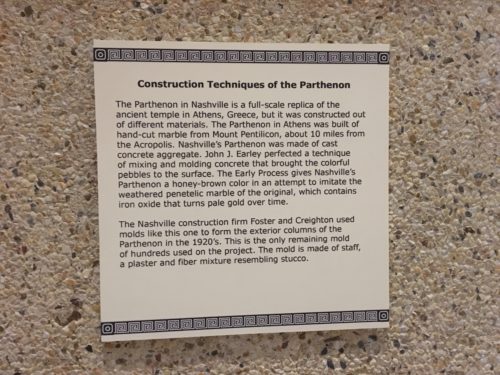
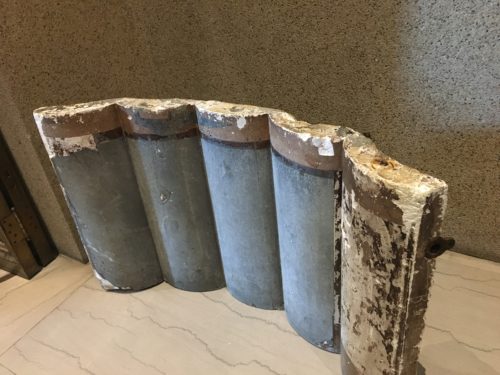
I thought it strange to just have this sitting here when it’s the last piece that’s survived.
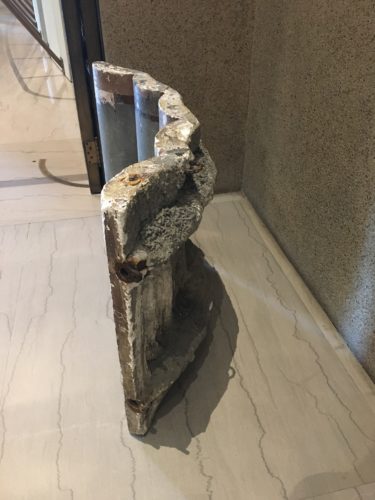
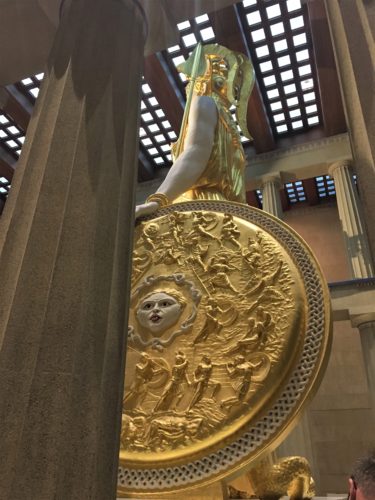
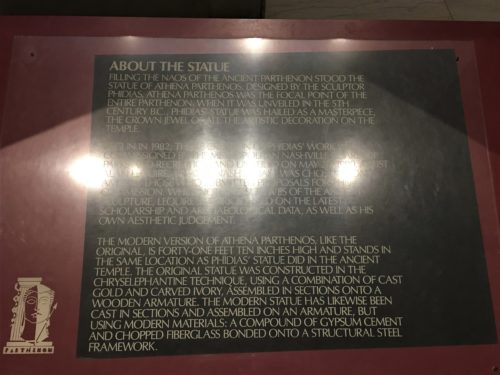
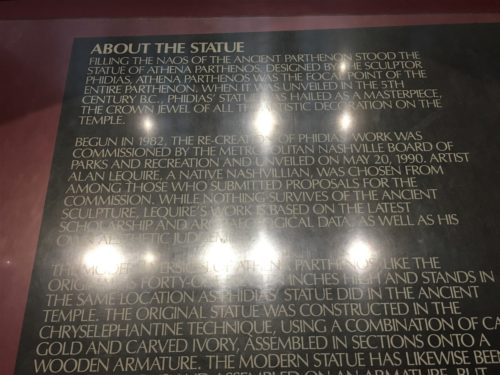
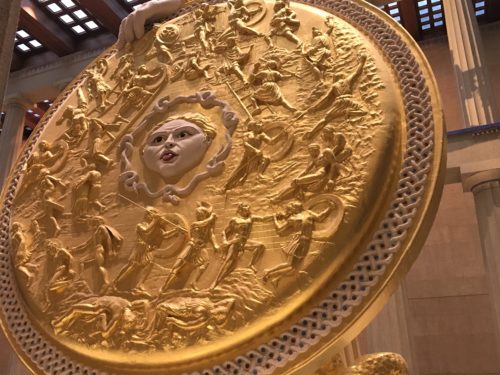
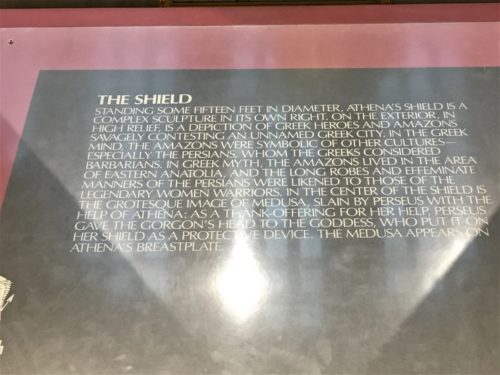
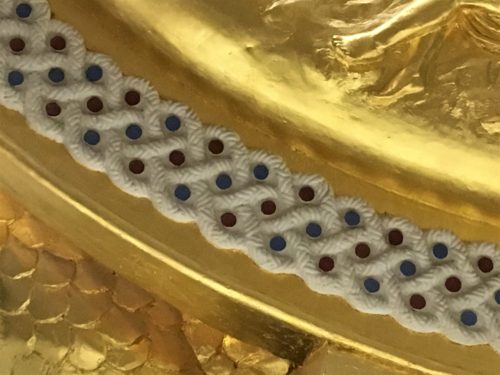
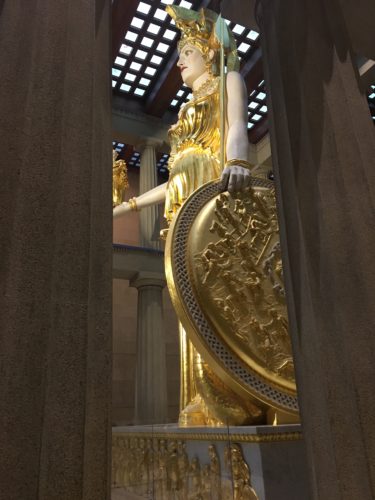
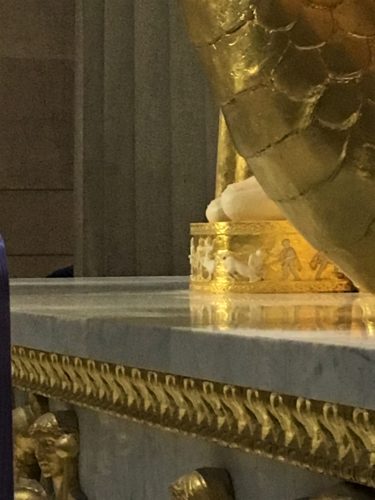
I hadn’t noticed the sandal until I read about it.
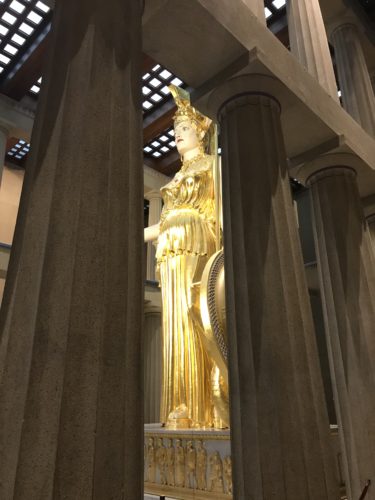
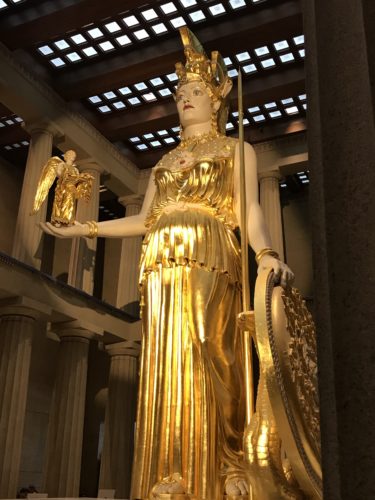
On the way out, you pass some more information. This is just a sample. Some is pretty surprising and/or interesting:
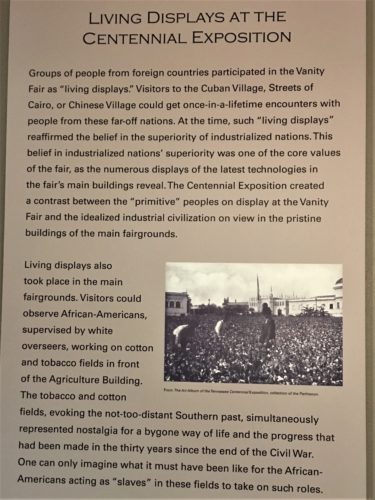
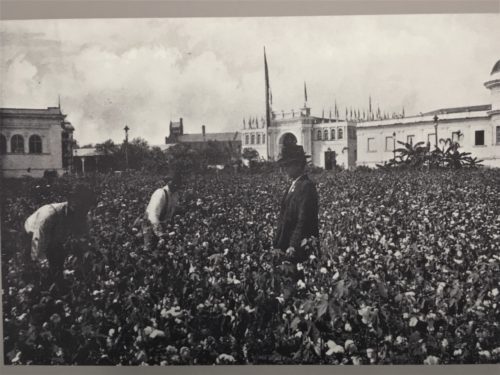
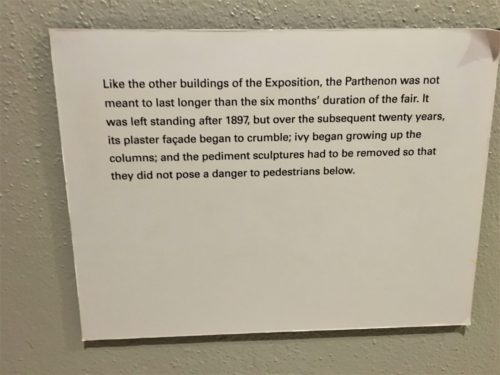
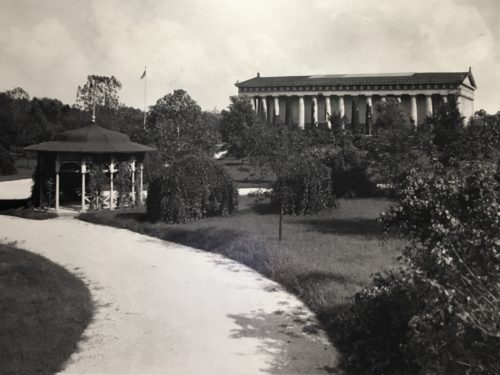
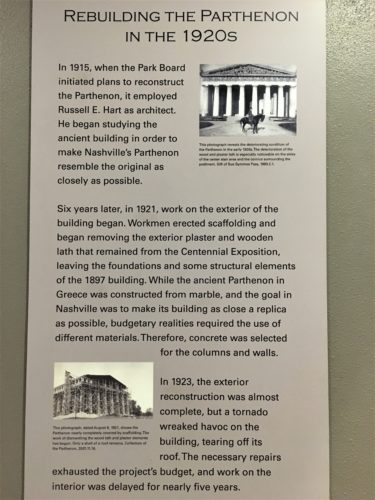
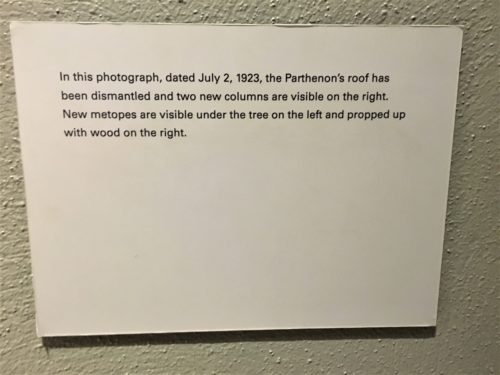
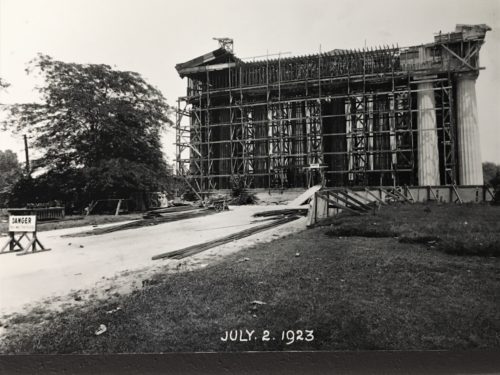
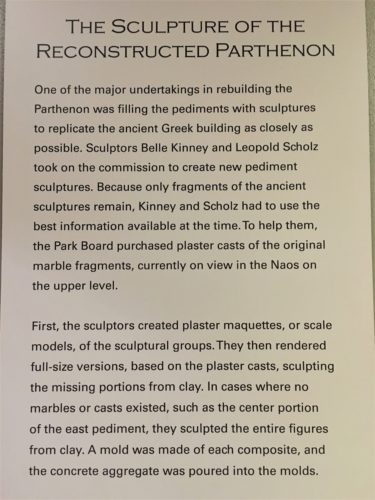
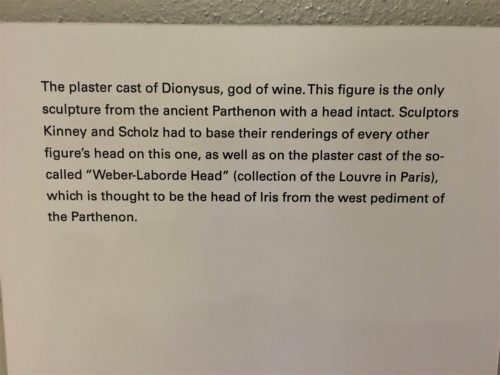
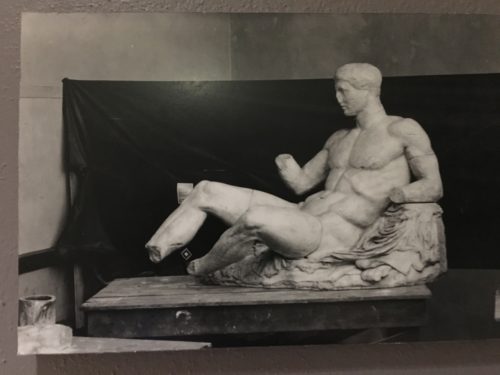
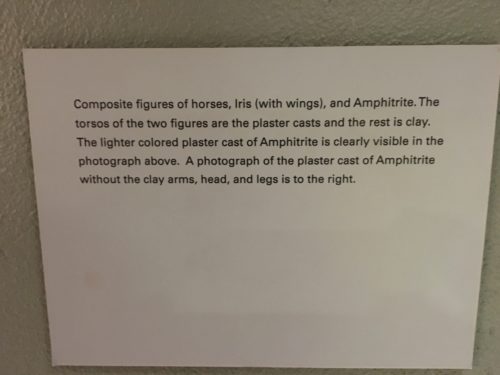
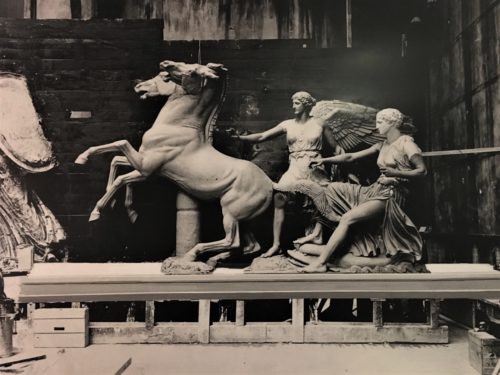
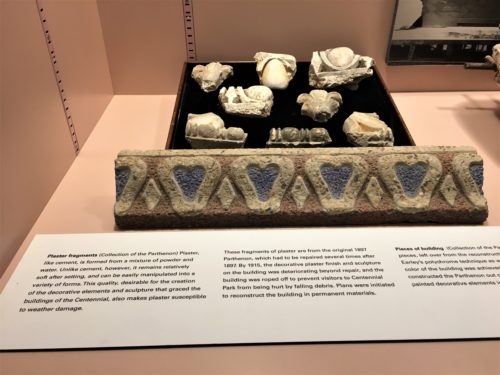
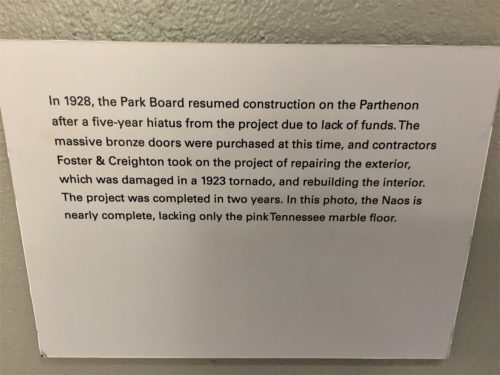
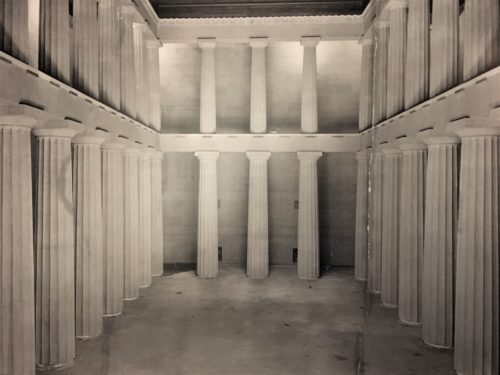
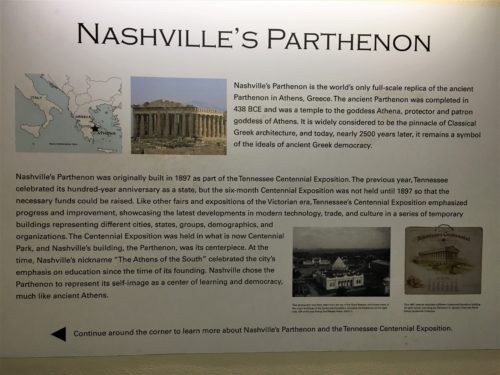
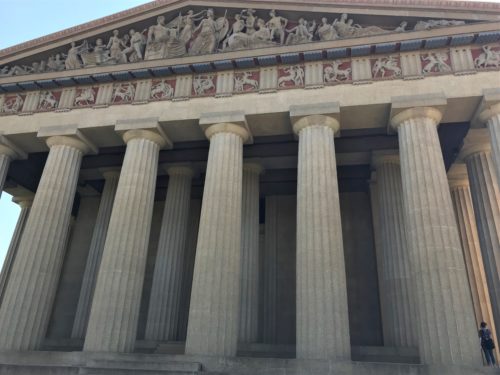
This and the next are back out front – where we entered.
Impressive as it is, the back – with the sun shining on it – was even more so!
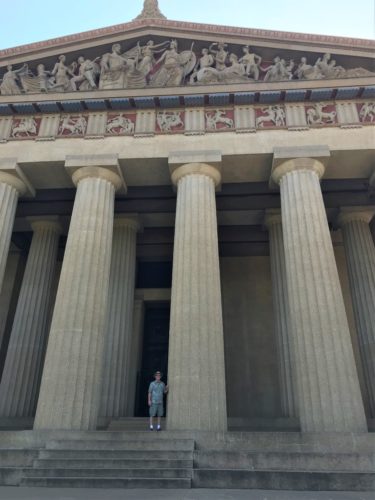
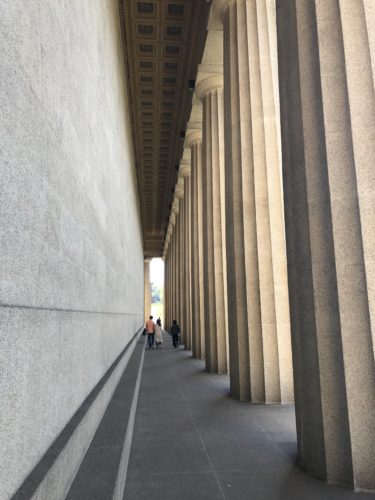
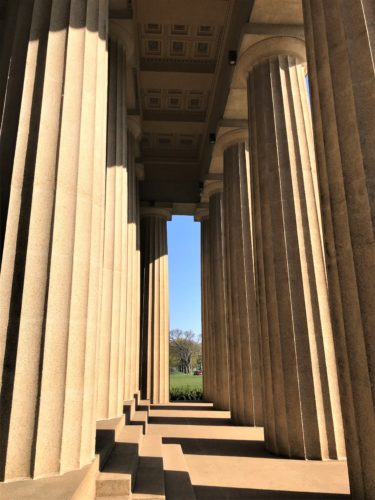
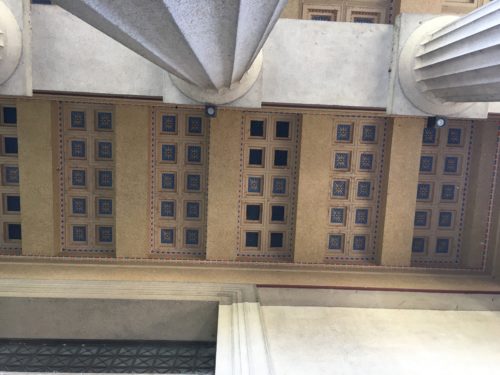
This is a very small portion of the ceiling outside.
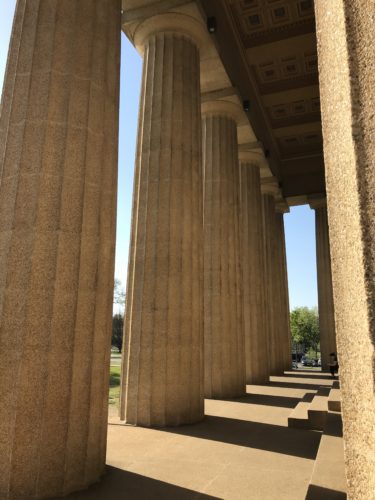
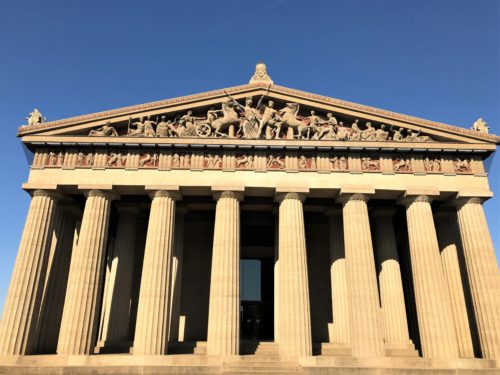
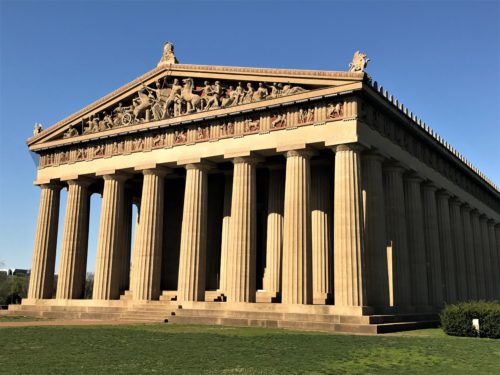
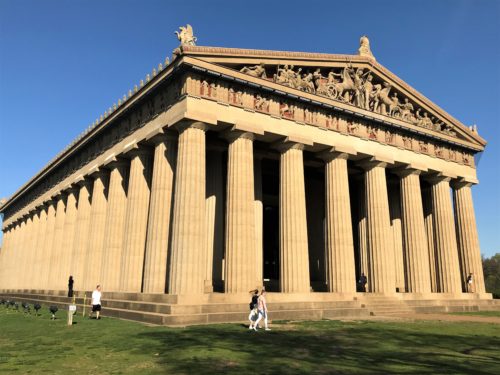
A wonderful experience!
Now it’s time to drive to a parking area downtown and find the entrance to the Pedestrian Bridge.
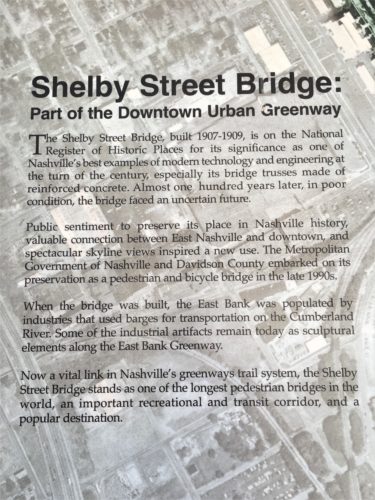
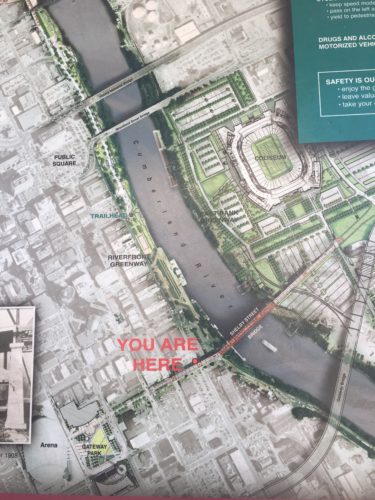
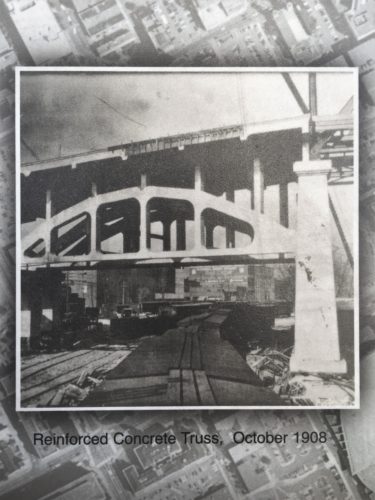
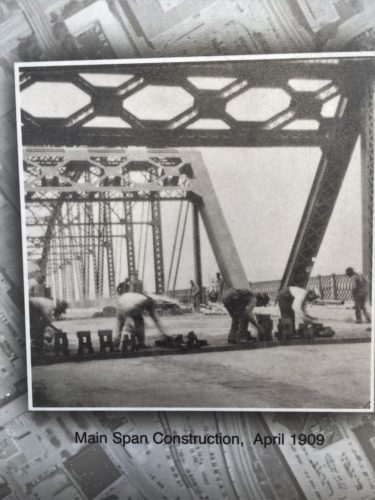



They were playing some absolutely awful sounds on this bridge. Seriously awful. We had no idea what it was and tried to ignore it. But you really couldn’t. It was too loud. Blaine thought maybe it scared the pigeons away. It just about scared us away!
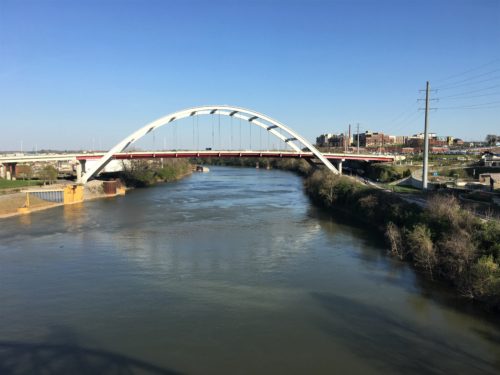
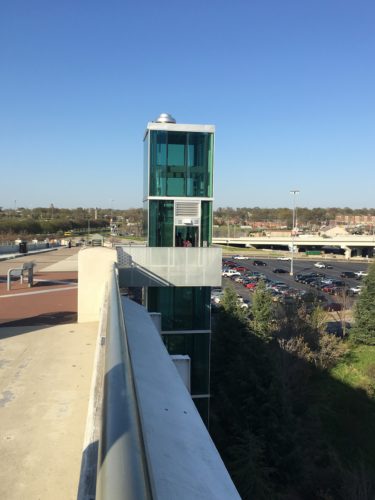
There’s an elevator!

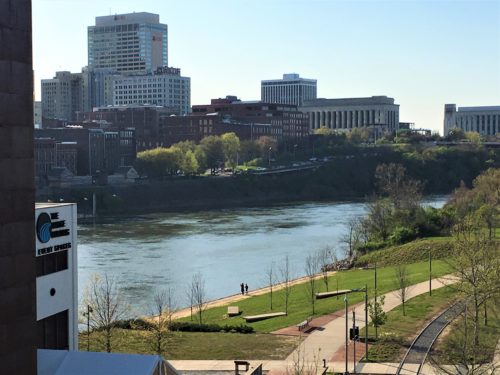
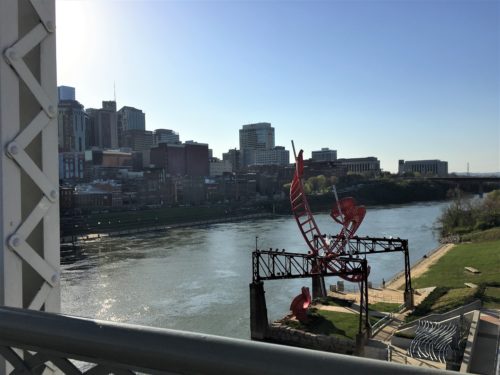
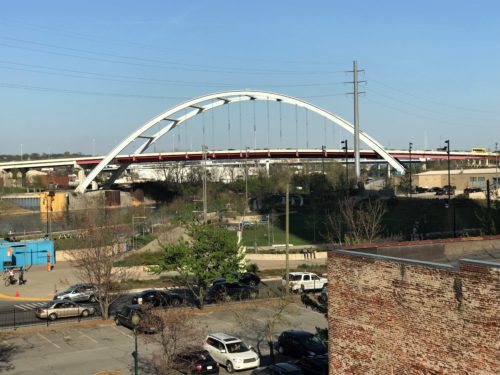
We were waiting for the sun to dip behind the AT&T building so we could take a picture of the city. Truthfully, we should have been here in the morning, but we were willing to wait for second place. There were benches periodically, and we sat and listened to a young man with an electric piano trying to play classical music over the annoying piped in sound. He did a good job. We tipped him, as we asked about the noise. He told us of the signs posted on our way off the bridge.
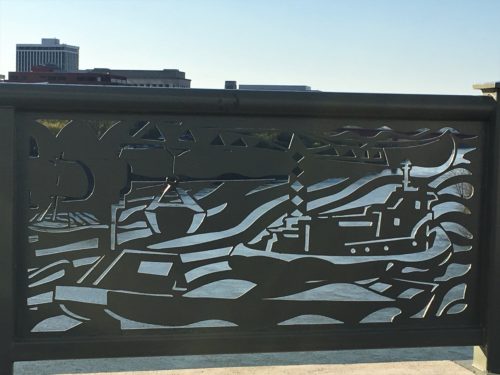
View from our bench.
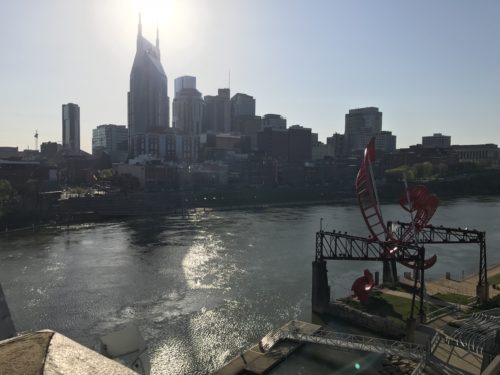
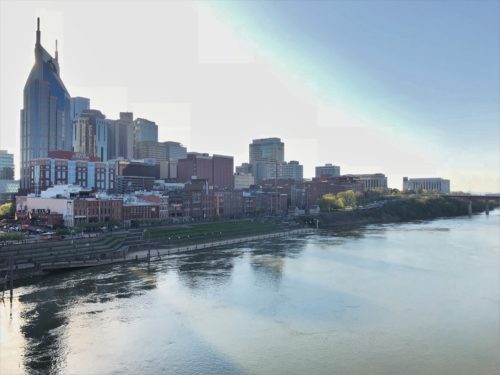

You’ve got to be kidding me! Someone with intelligence, needs to come actually listen to this. Now see if I’m wrong. . . .
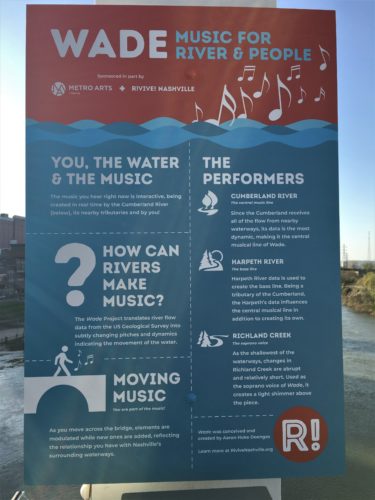
Down off the bridge, we wandered around town until almost, but not quite, sunset.
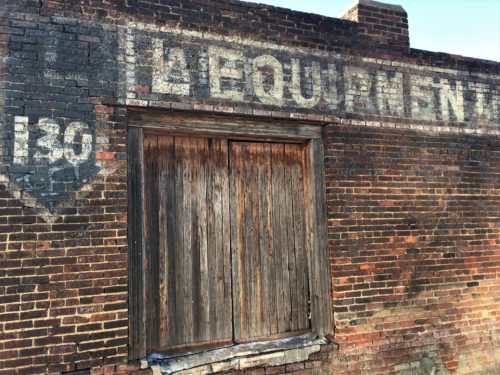
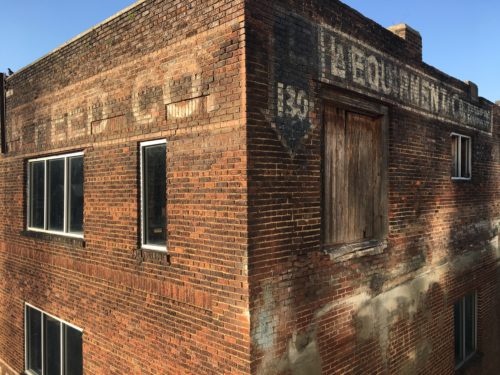

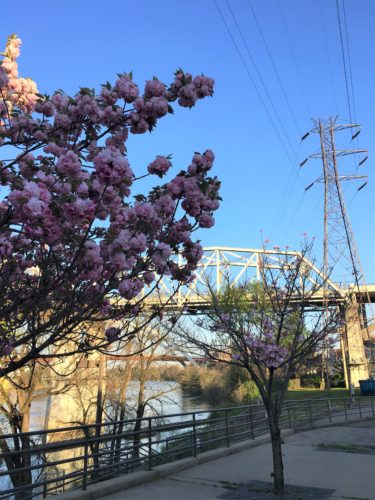
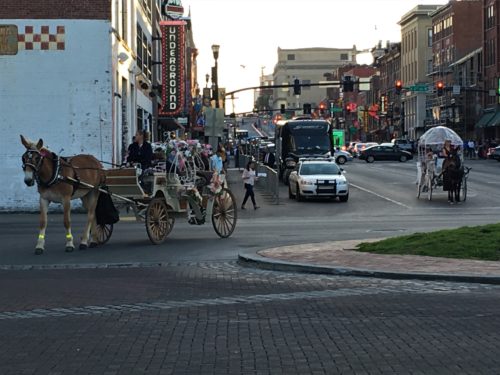
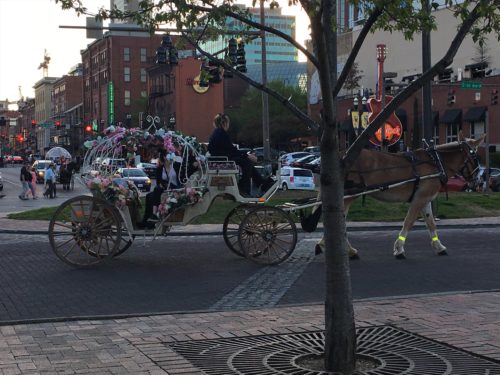
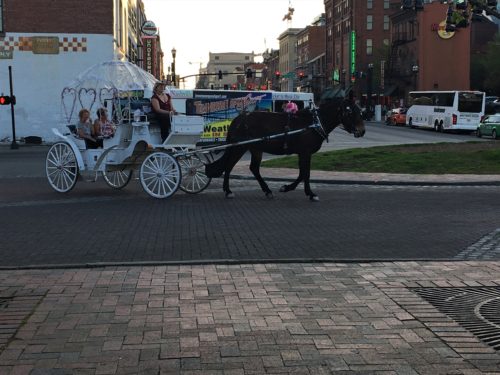
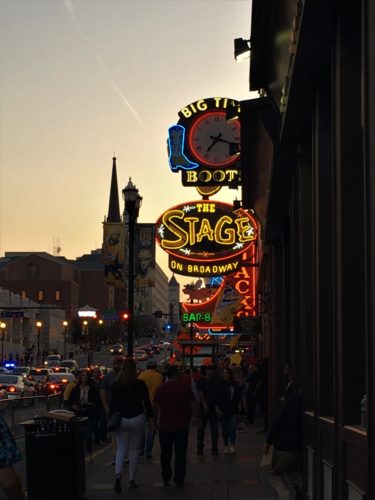
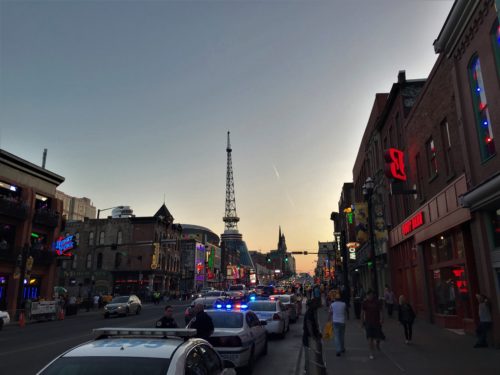
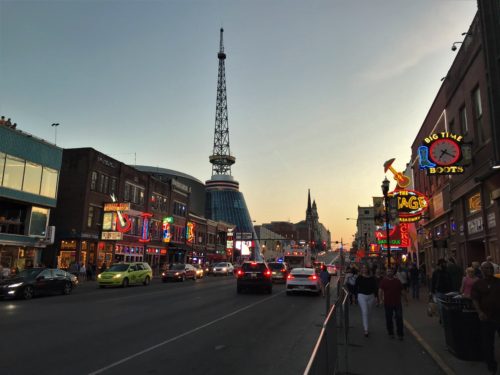
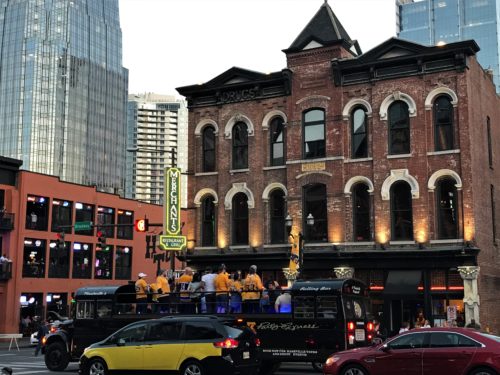
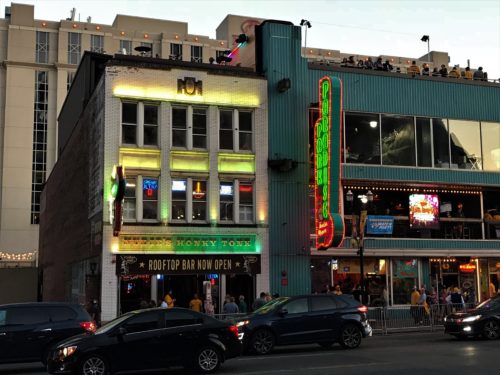
We were tired and ready to go home.



TOTAL HIKING MILES: 6
Year To Date: 267
Daily Average: 2.67
